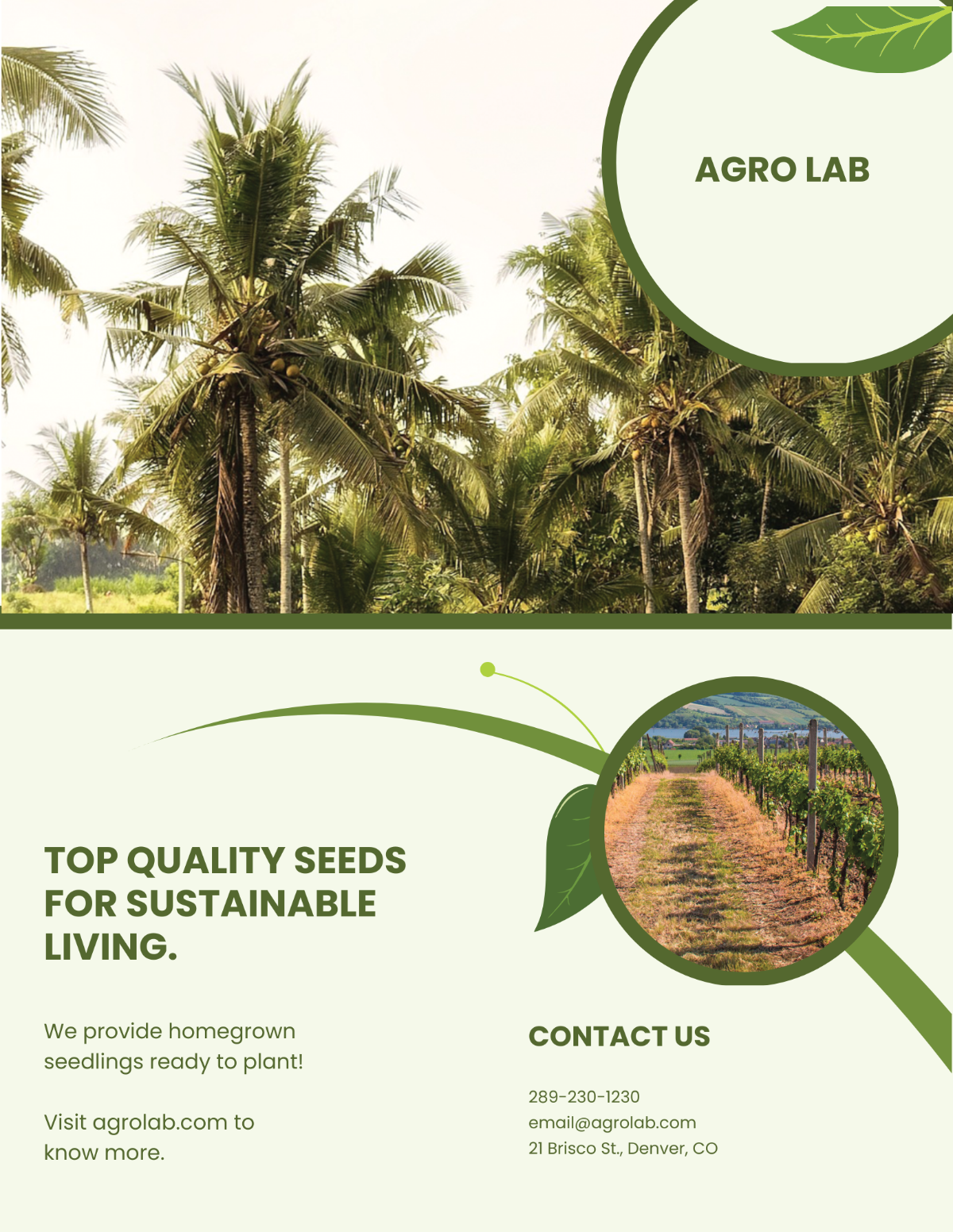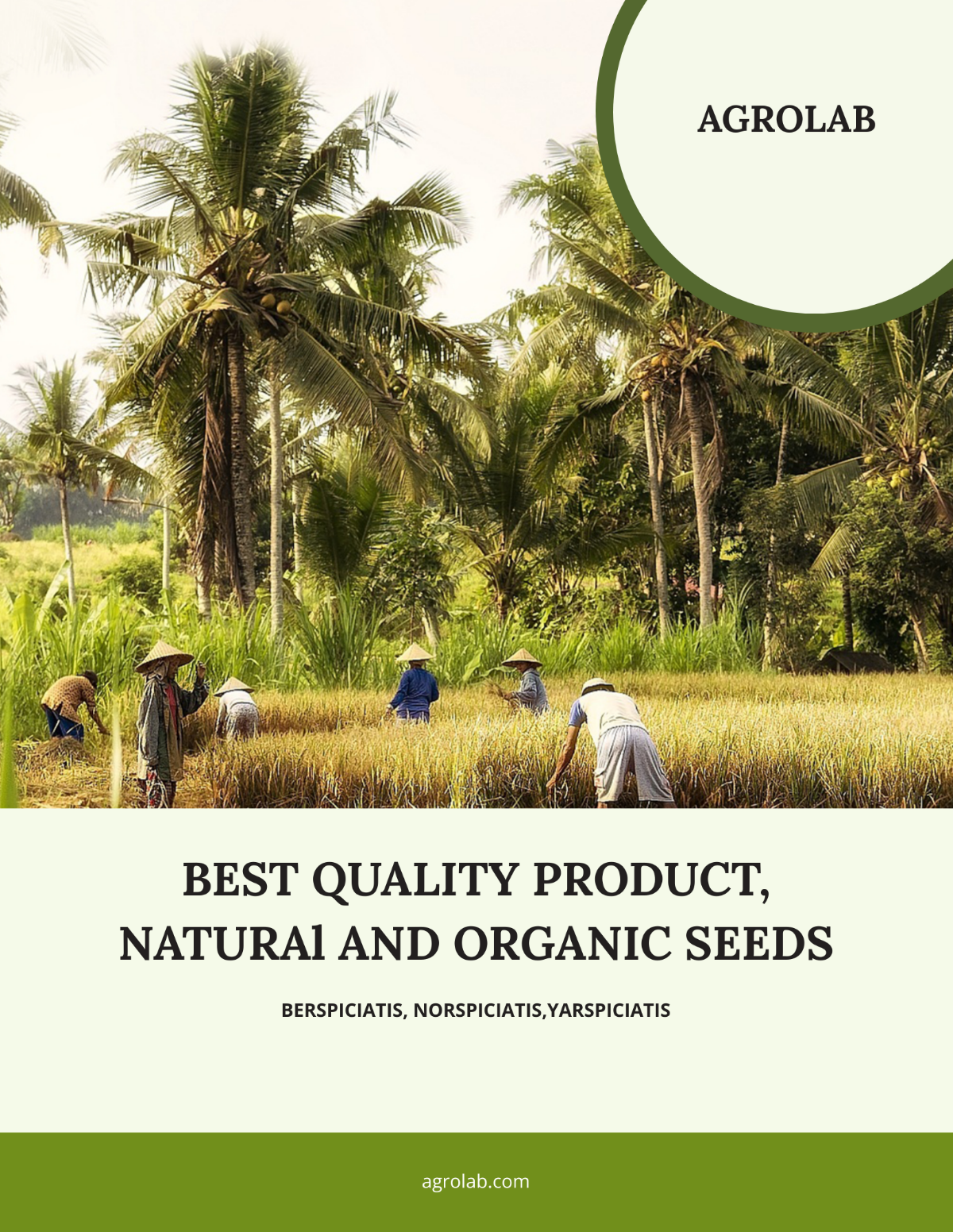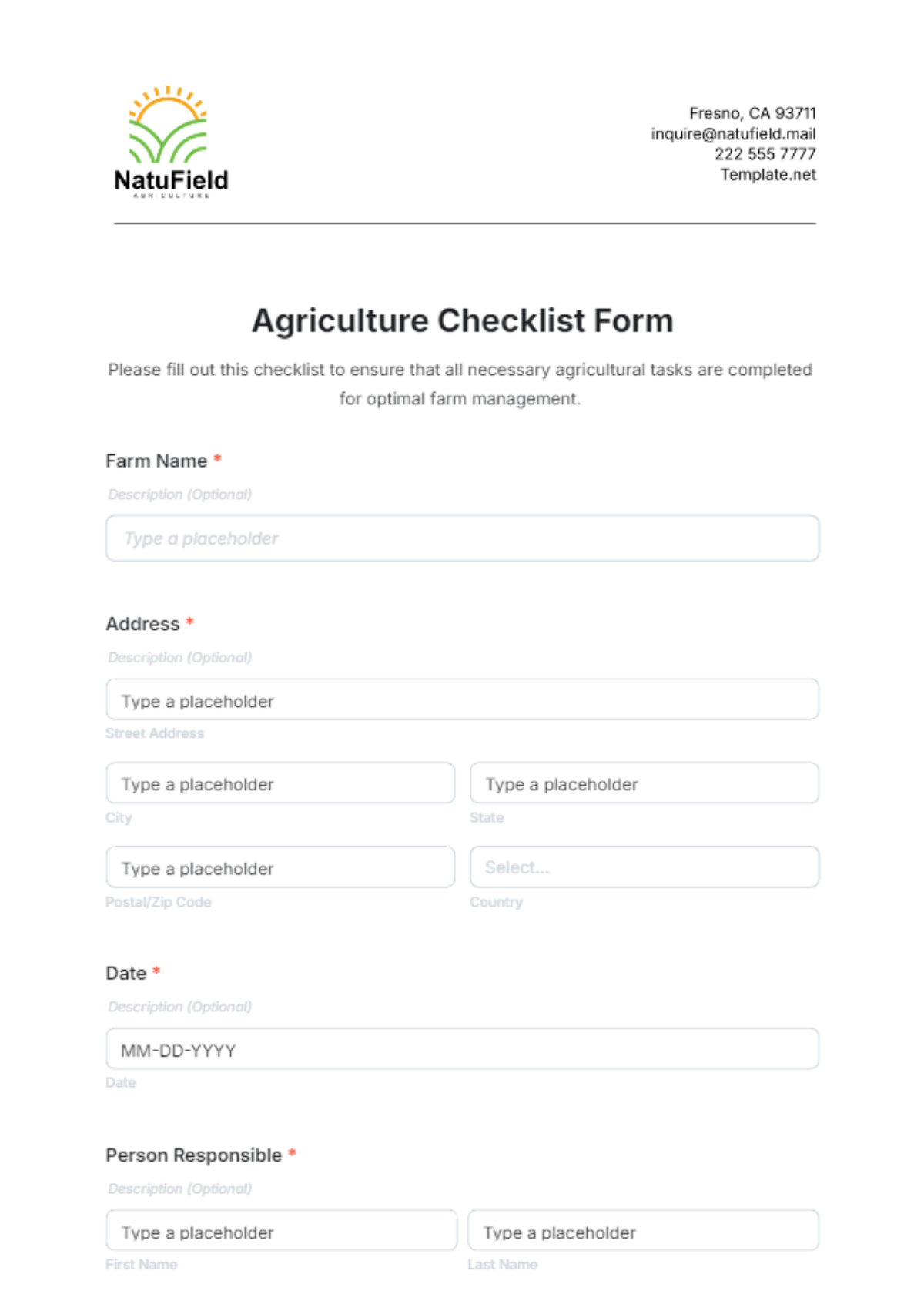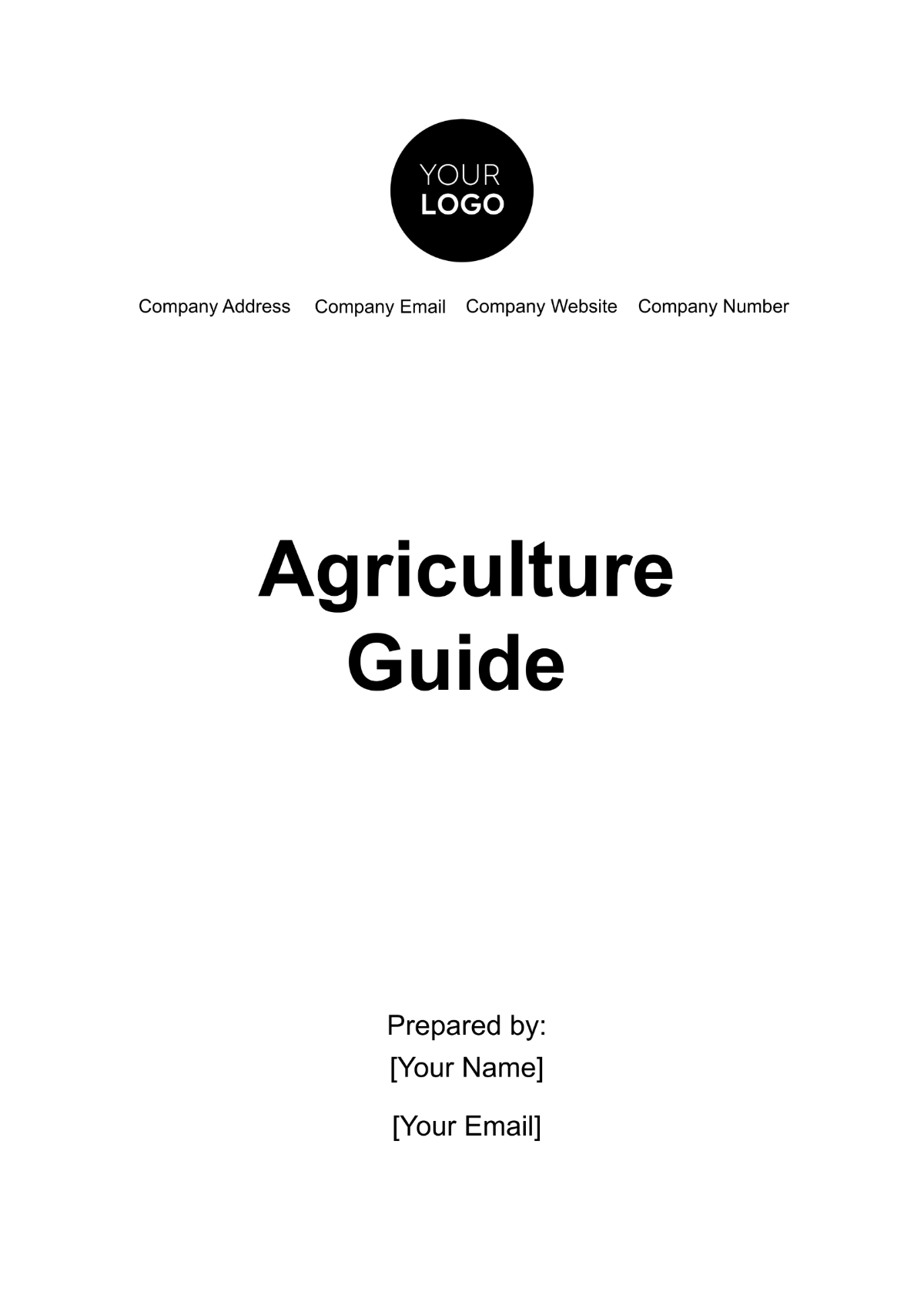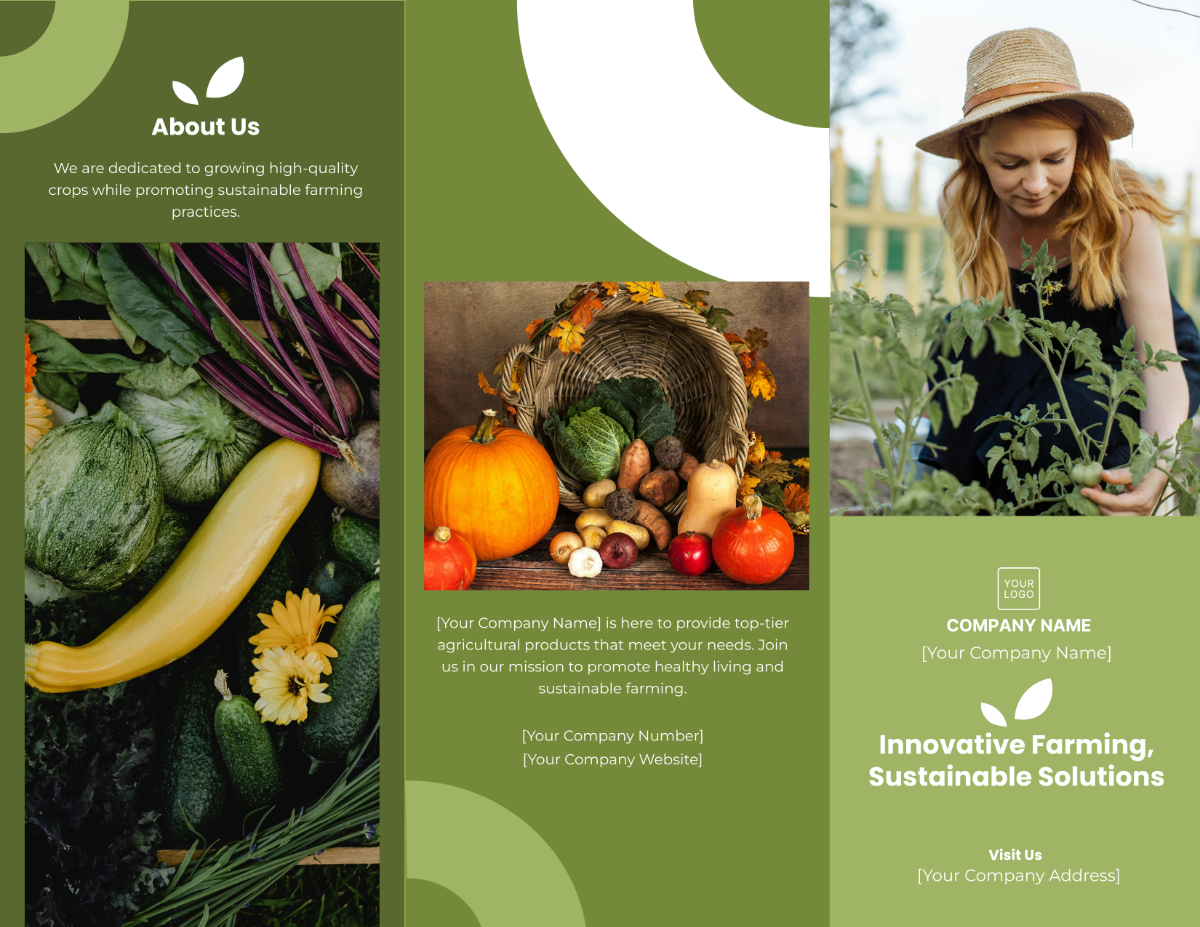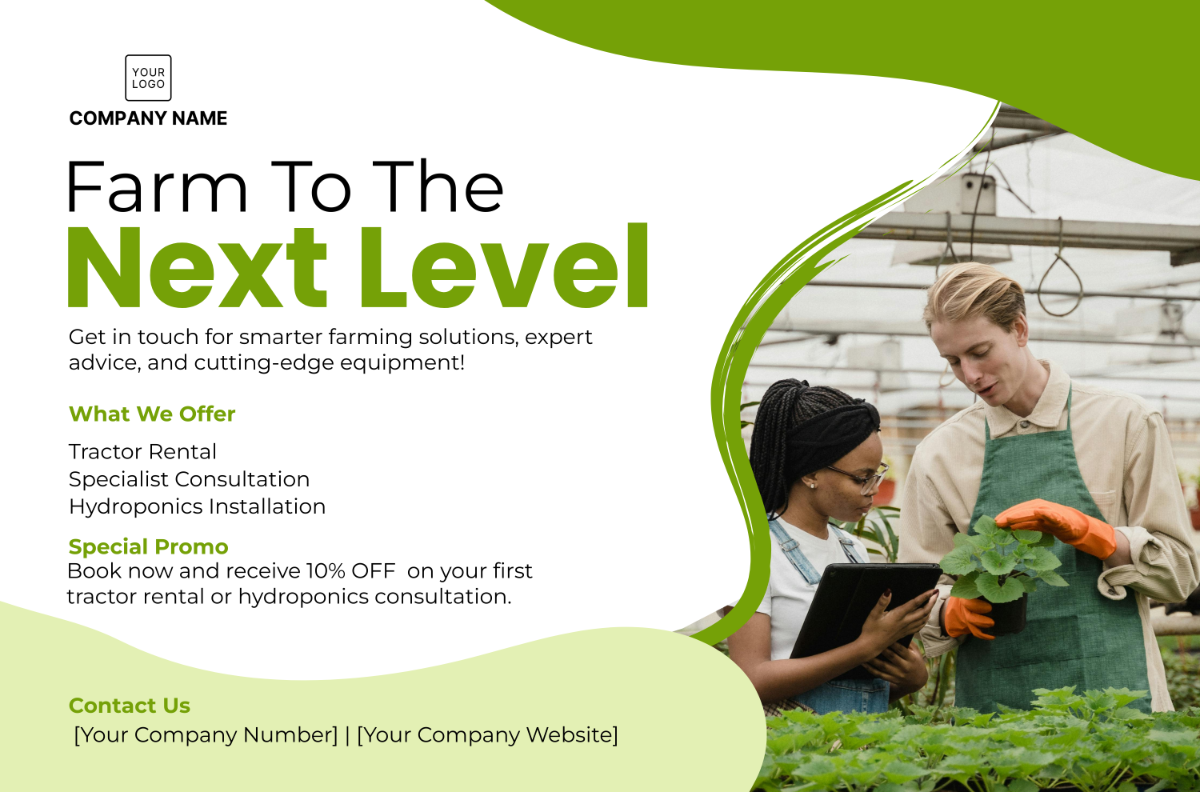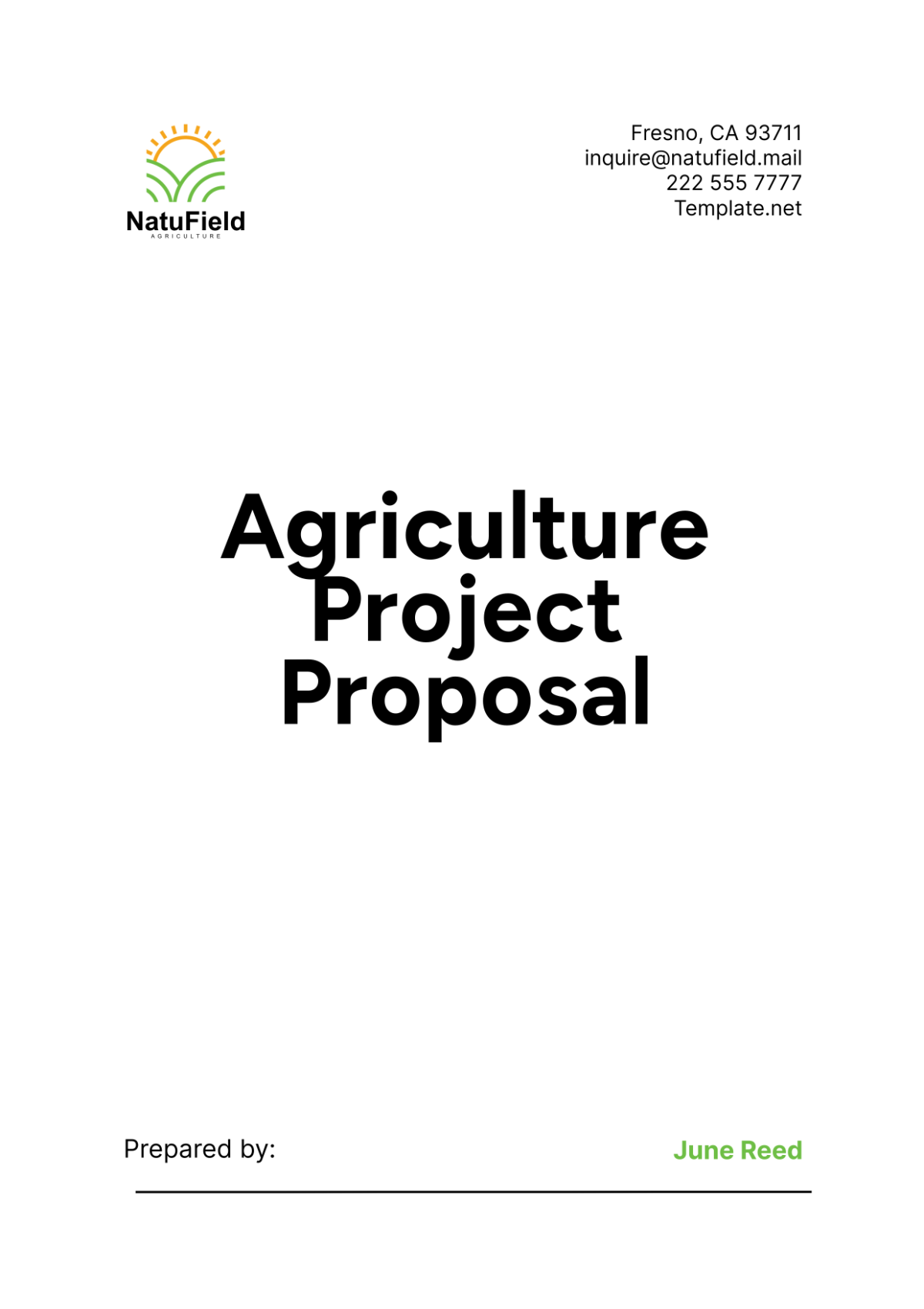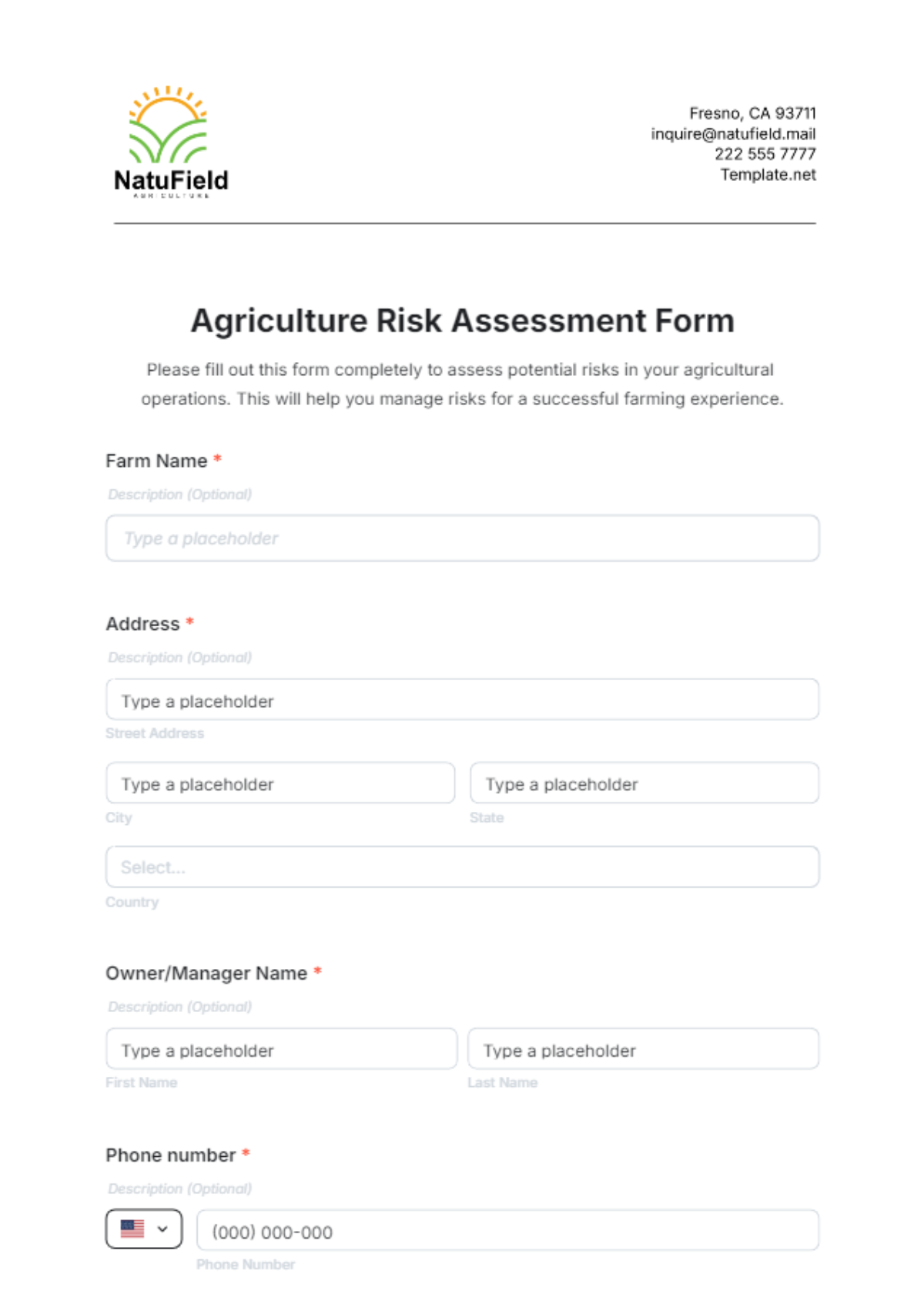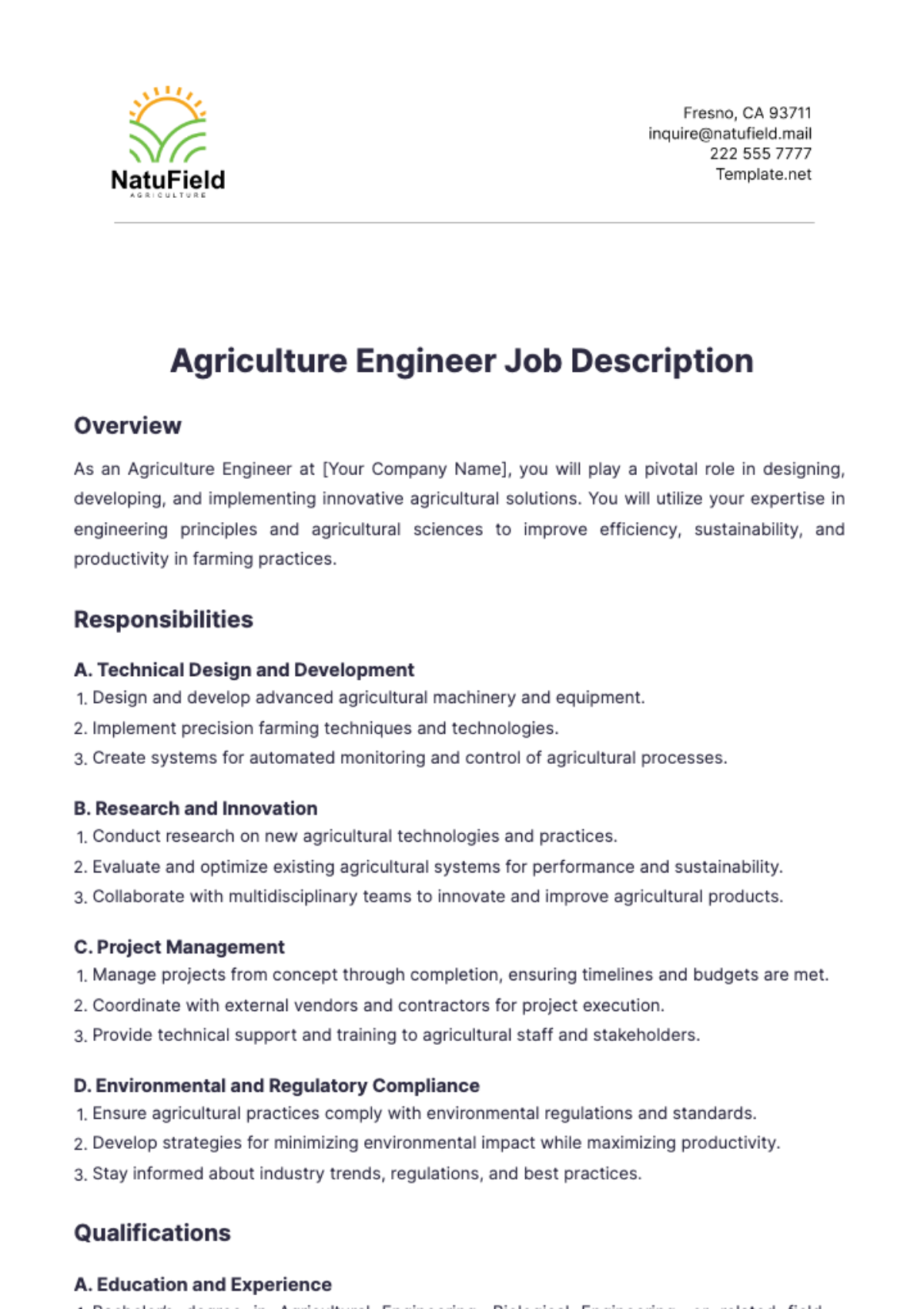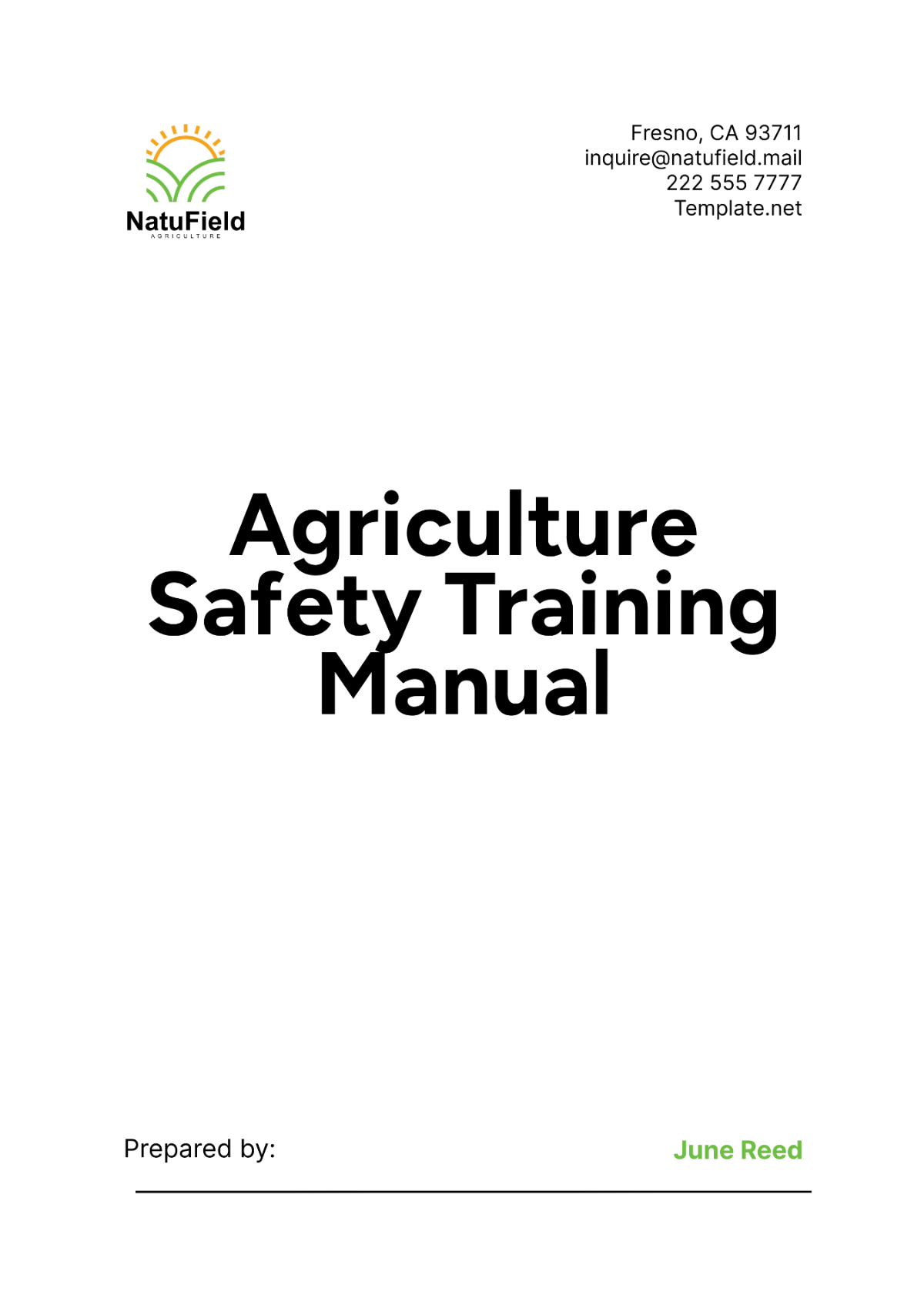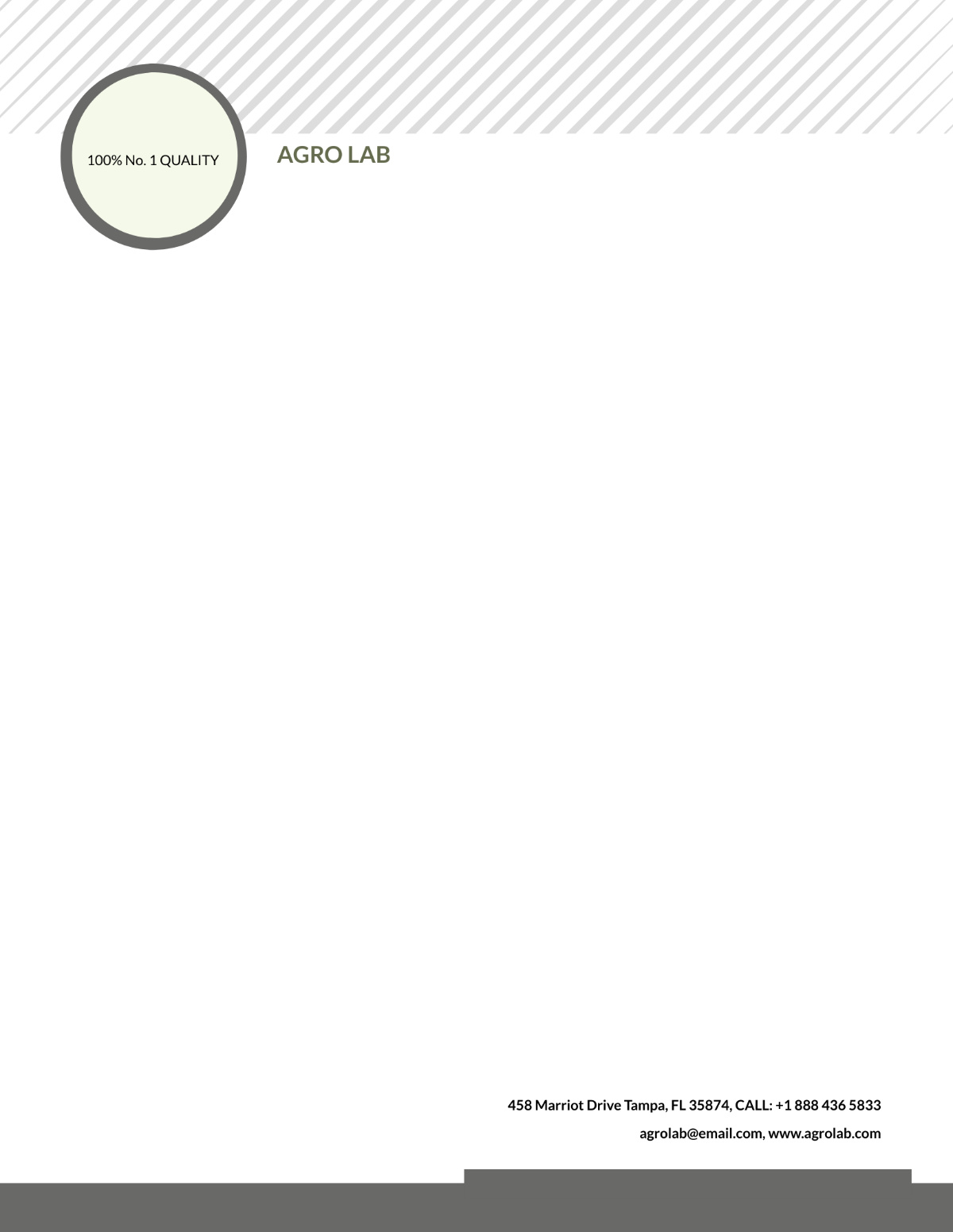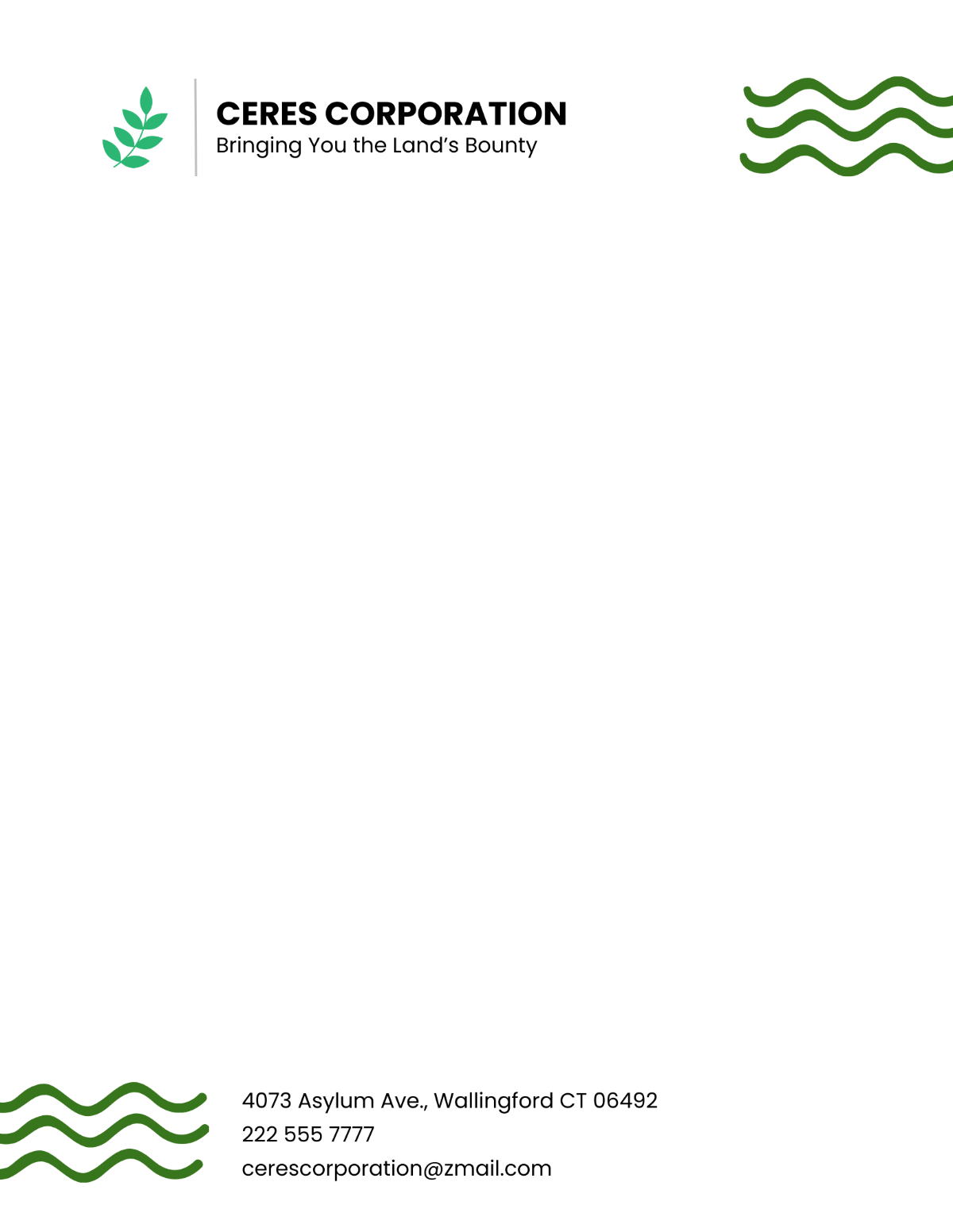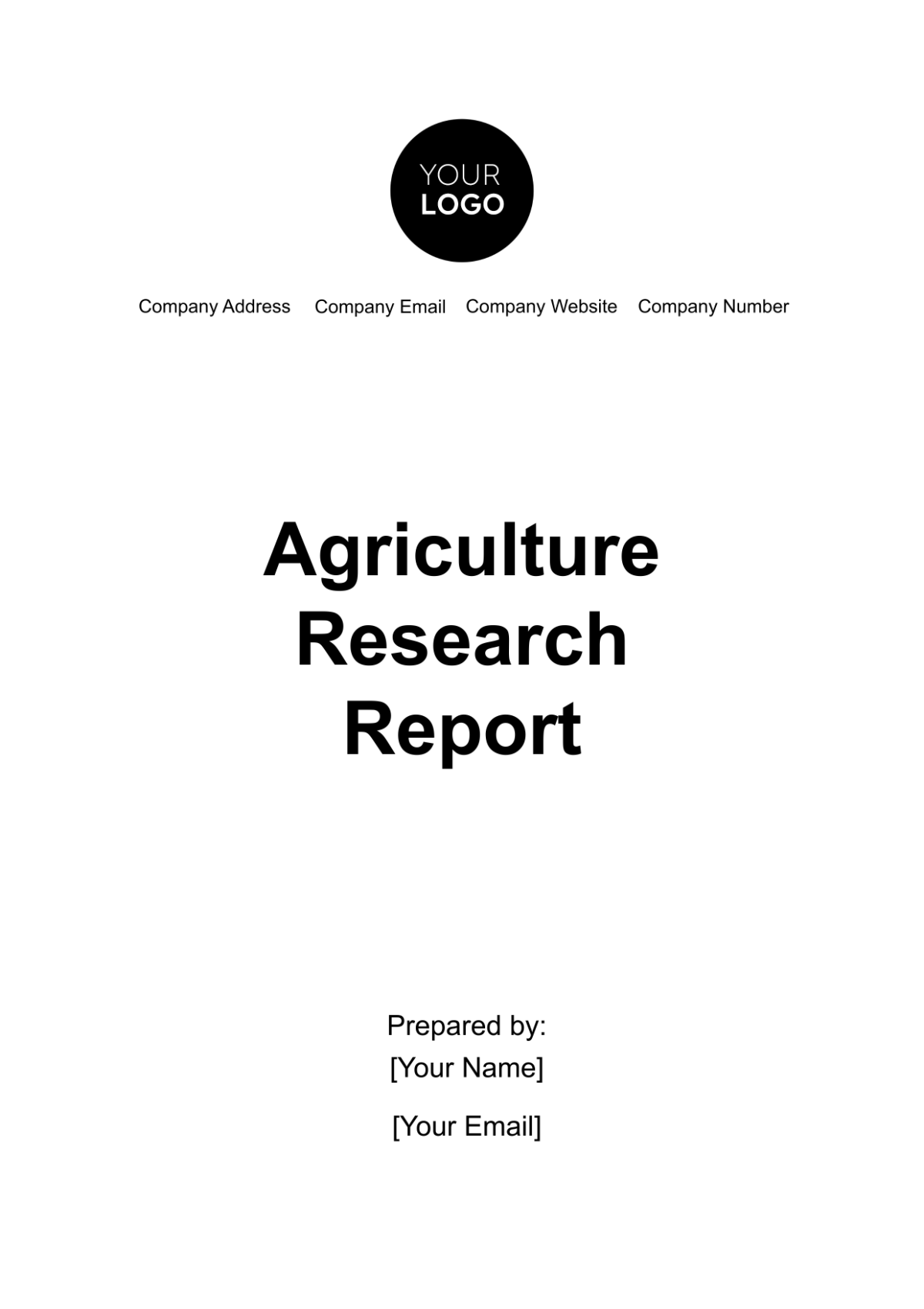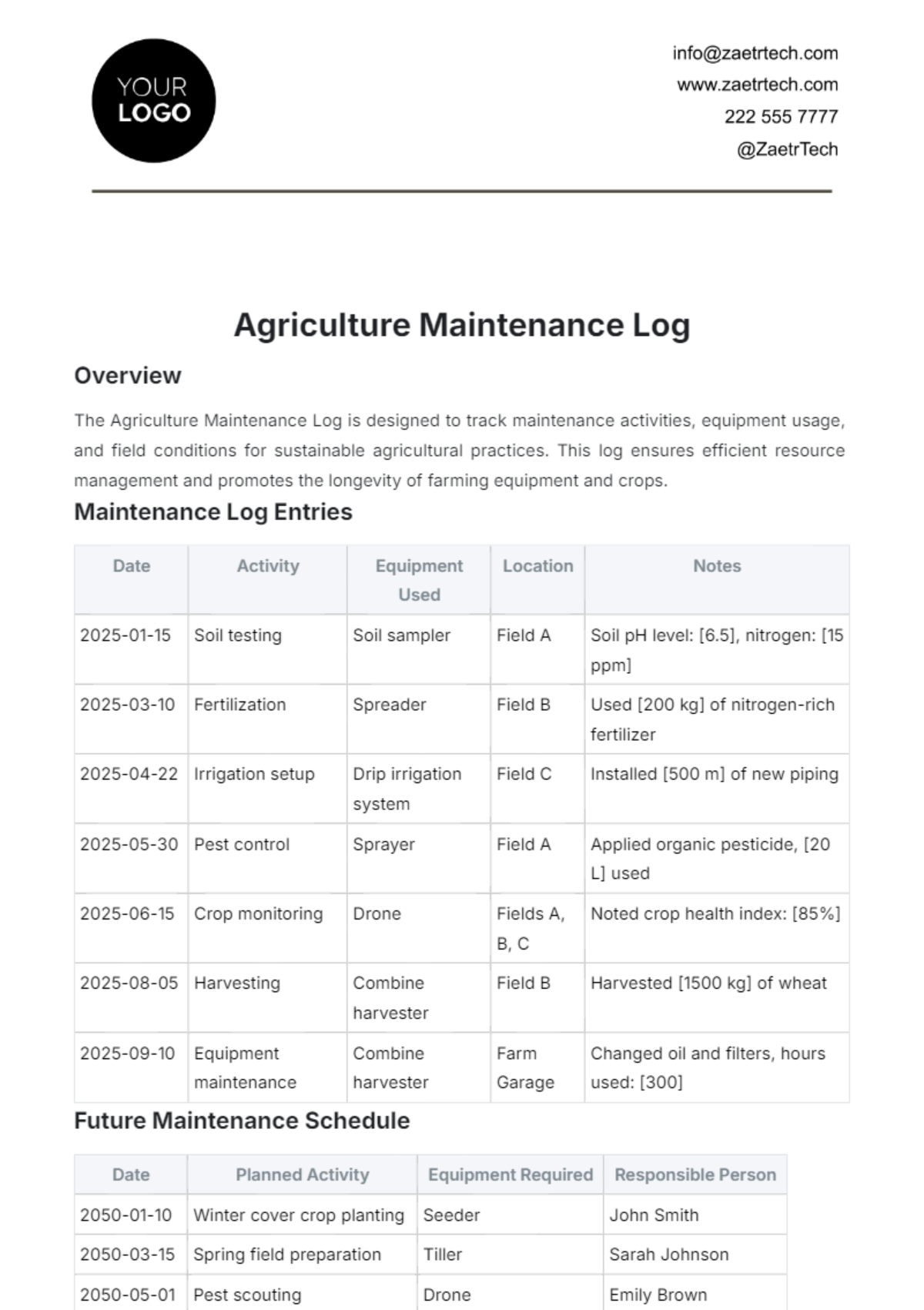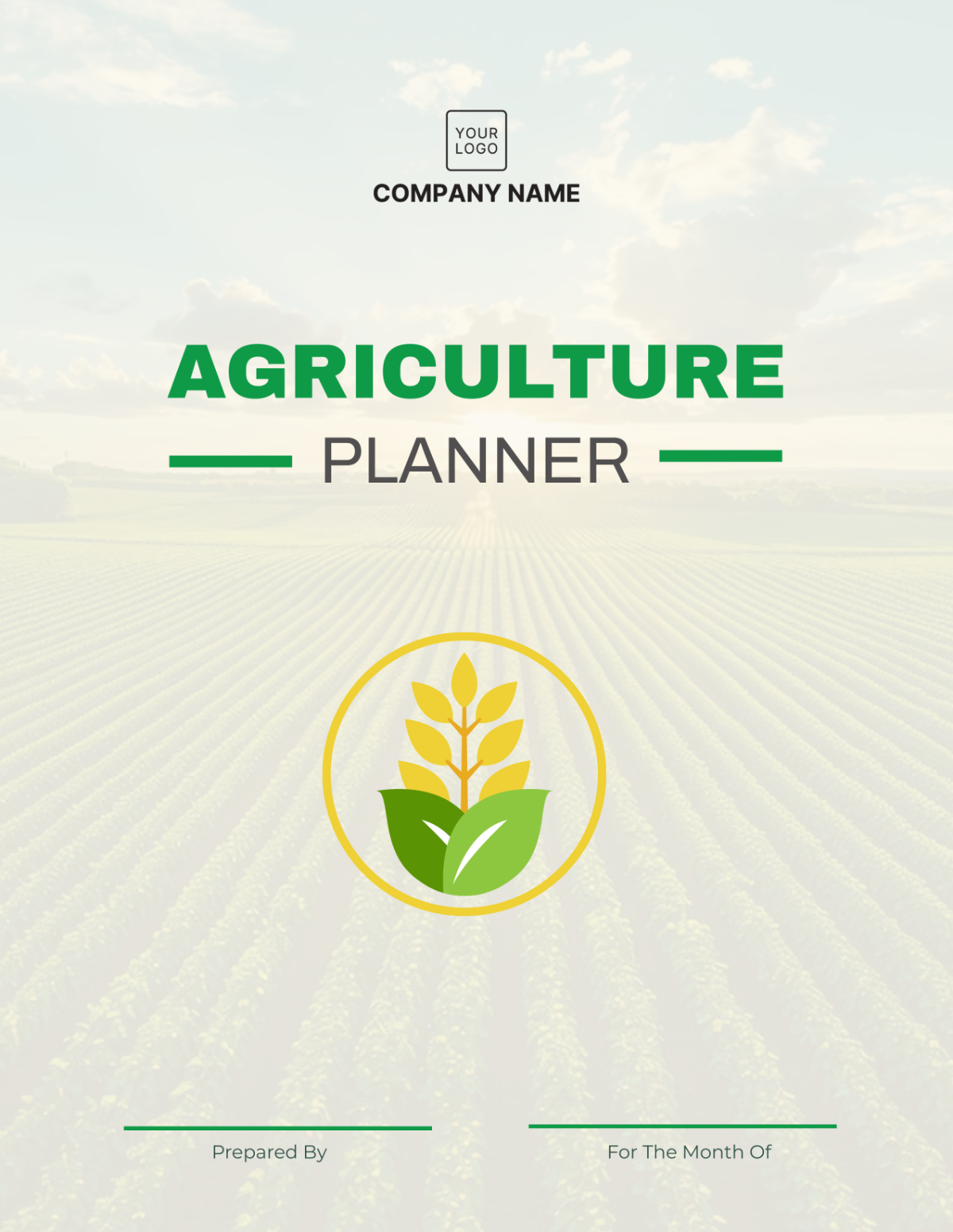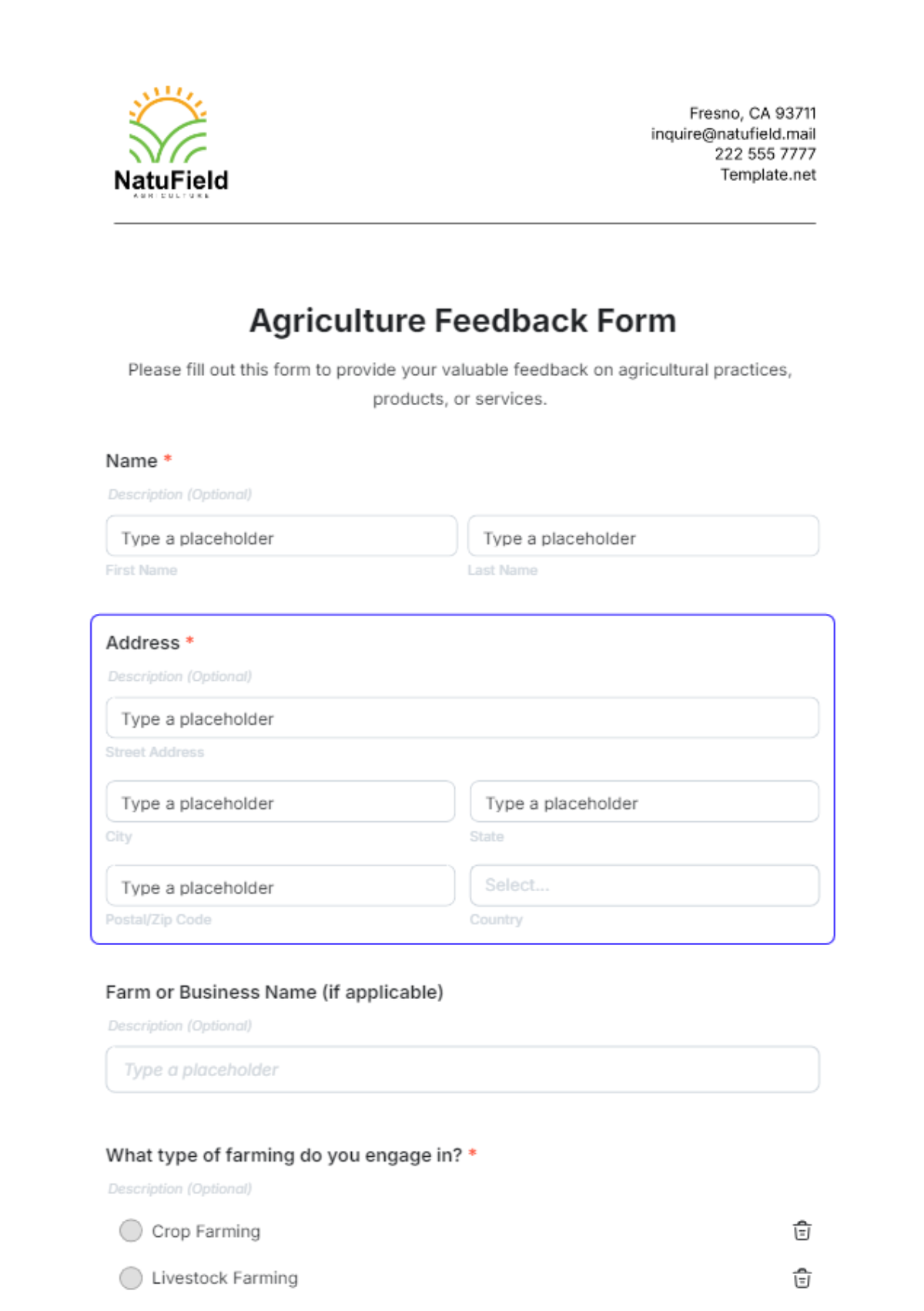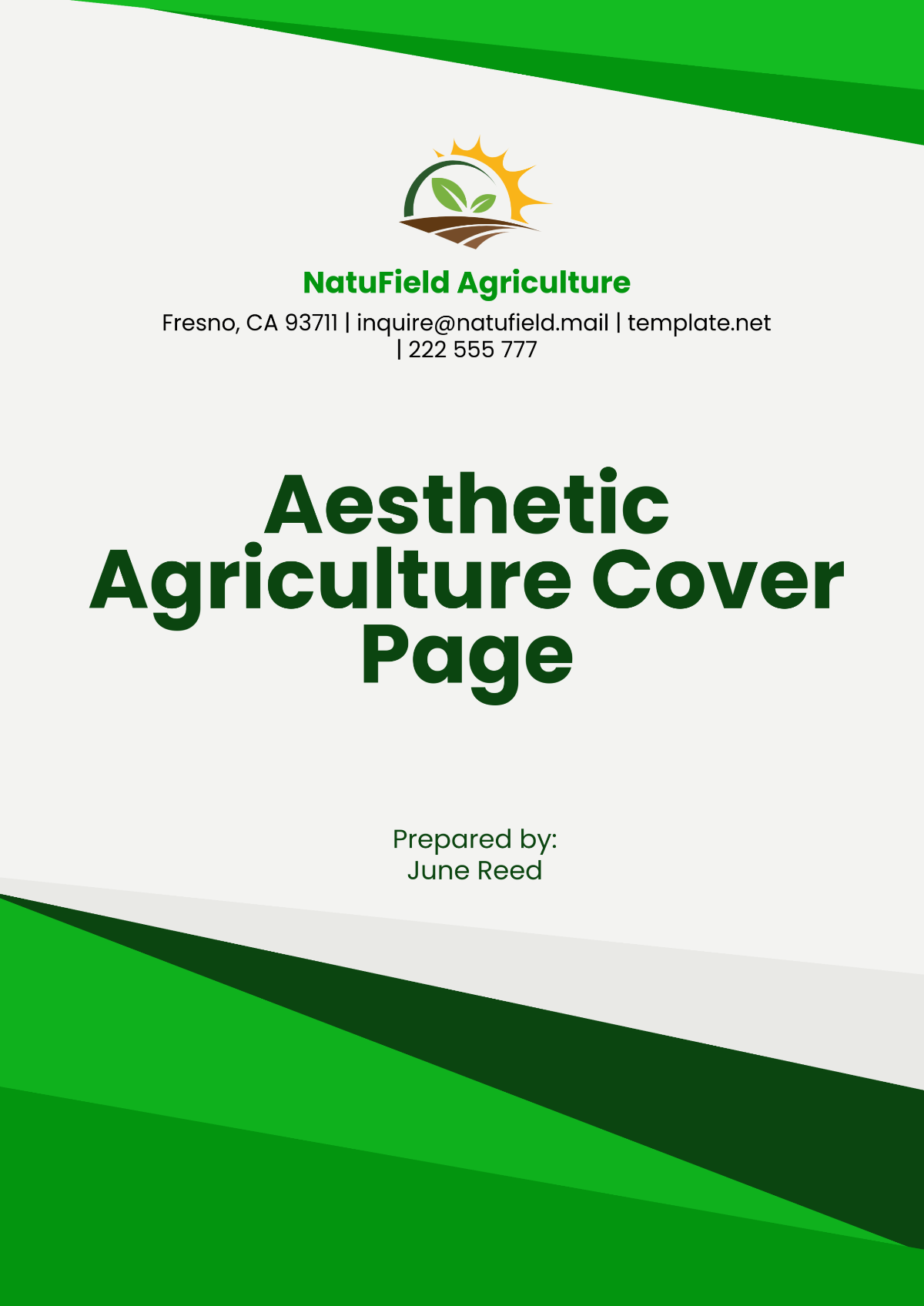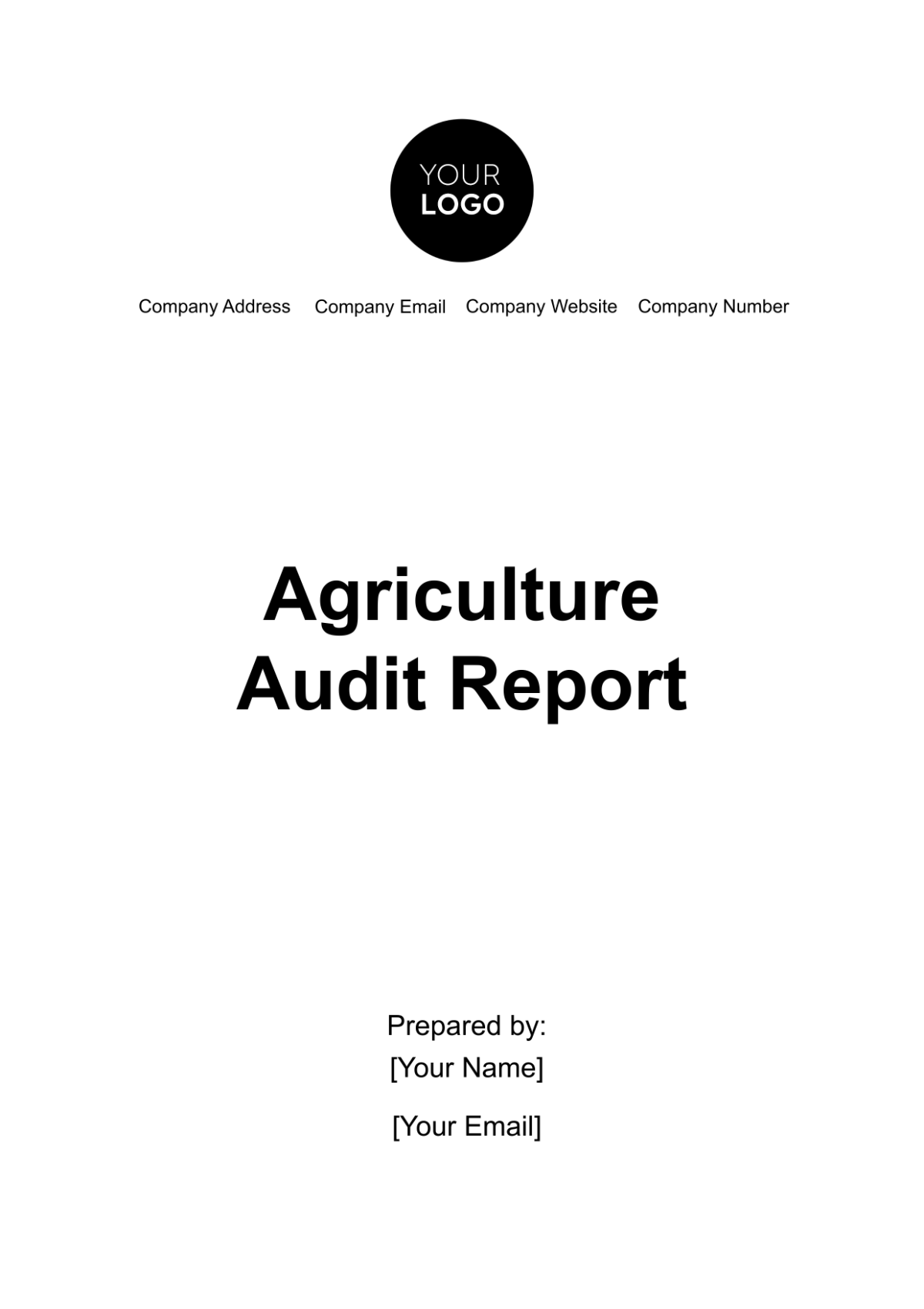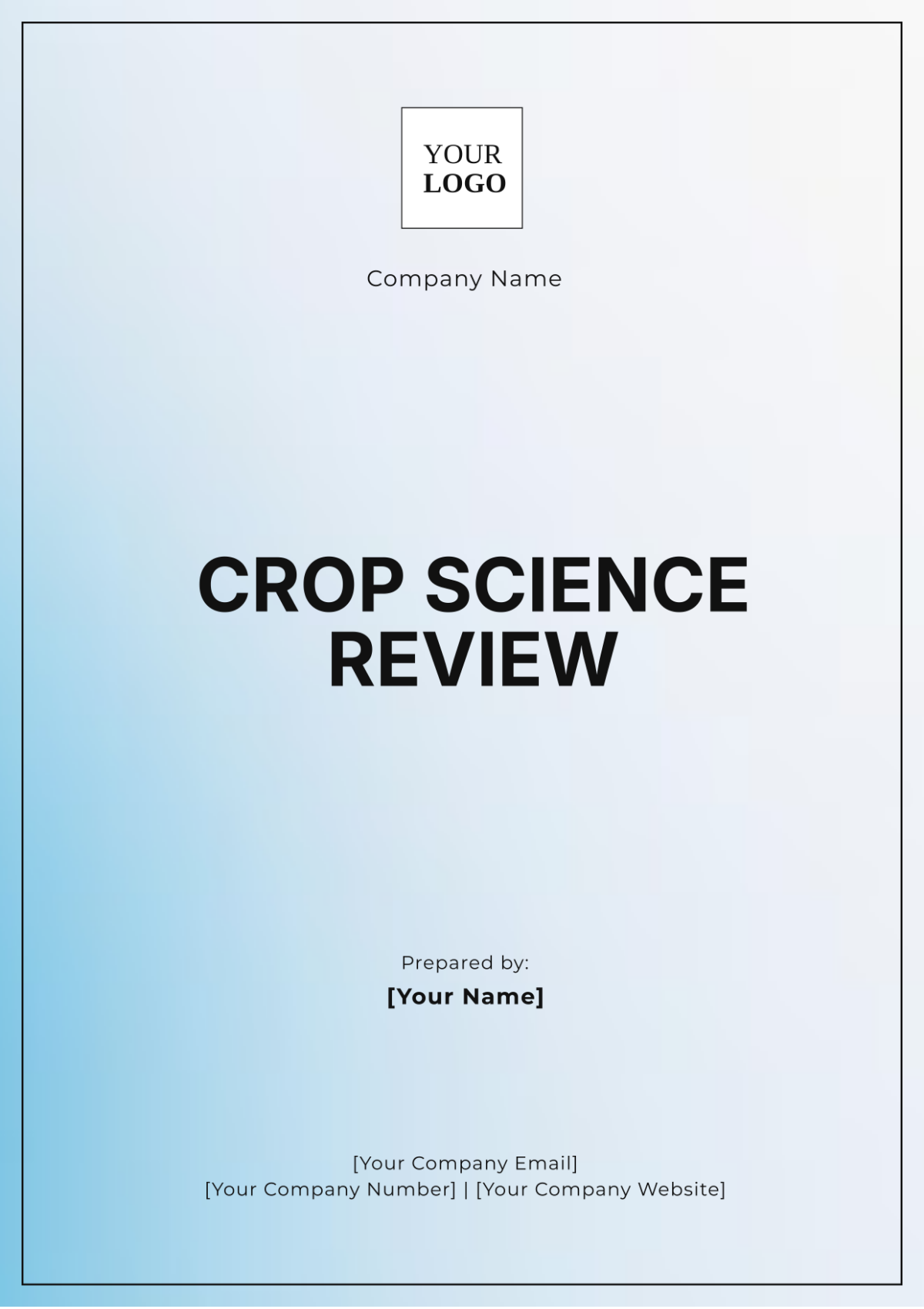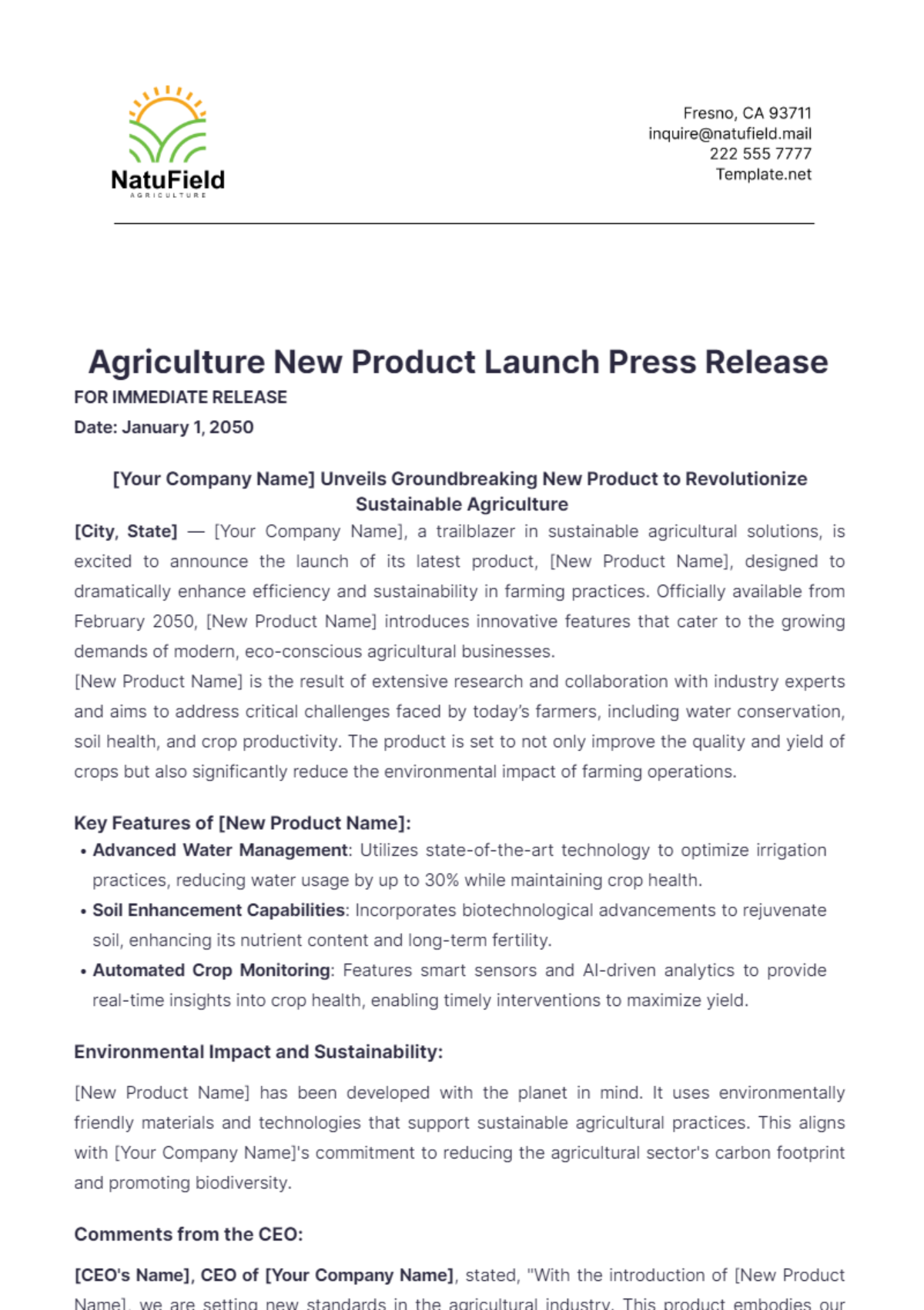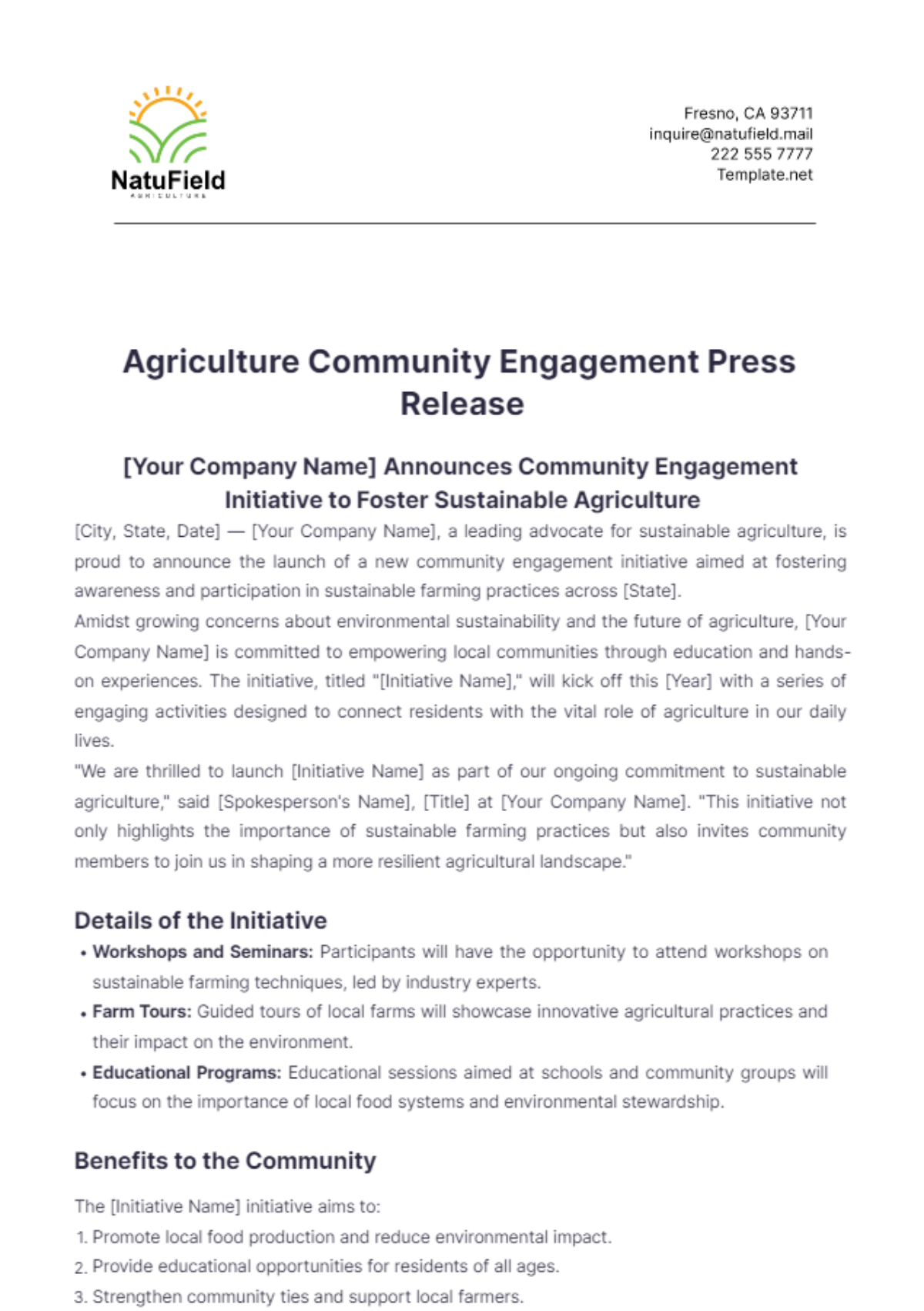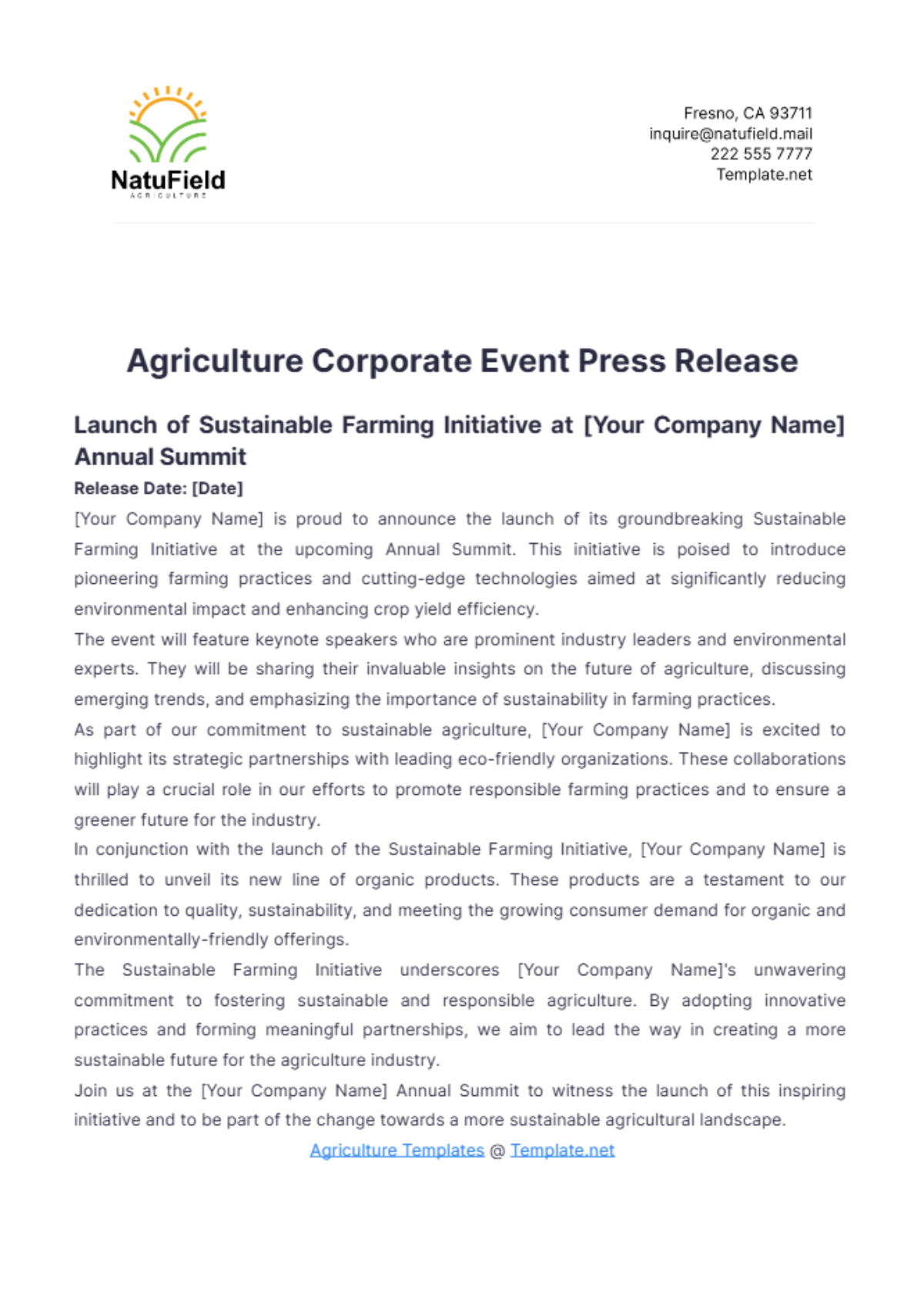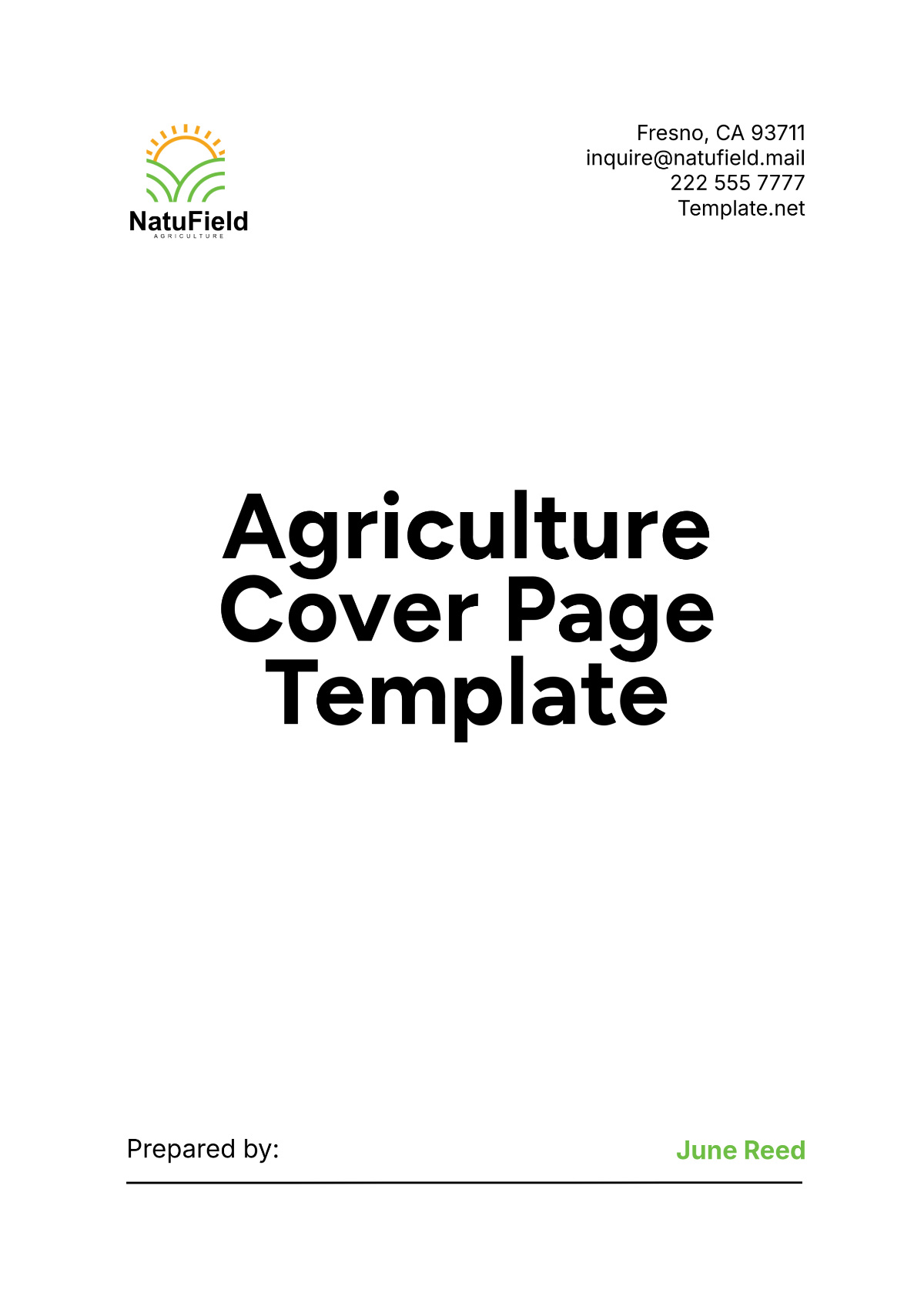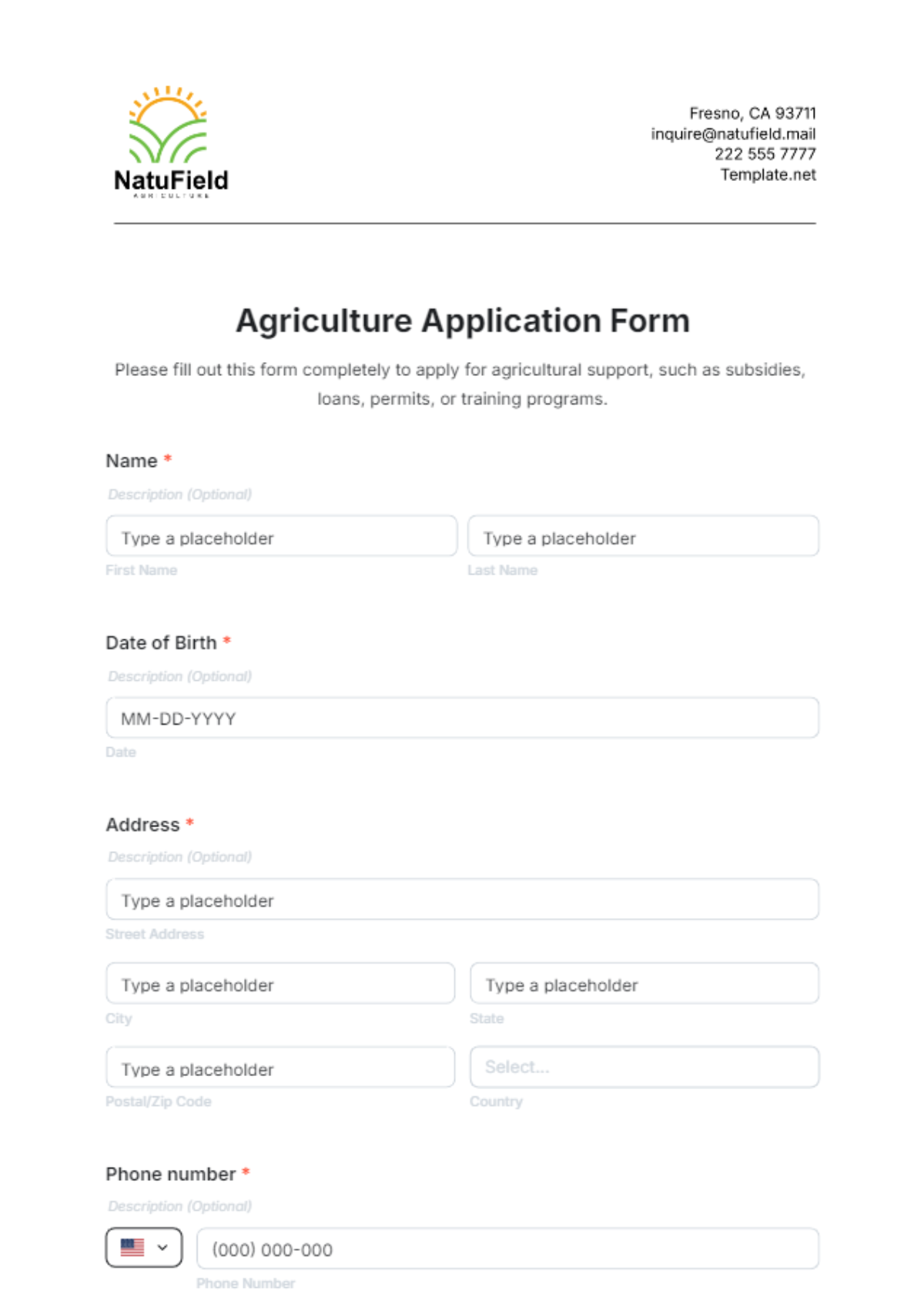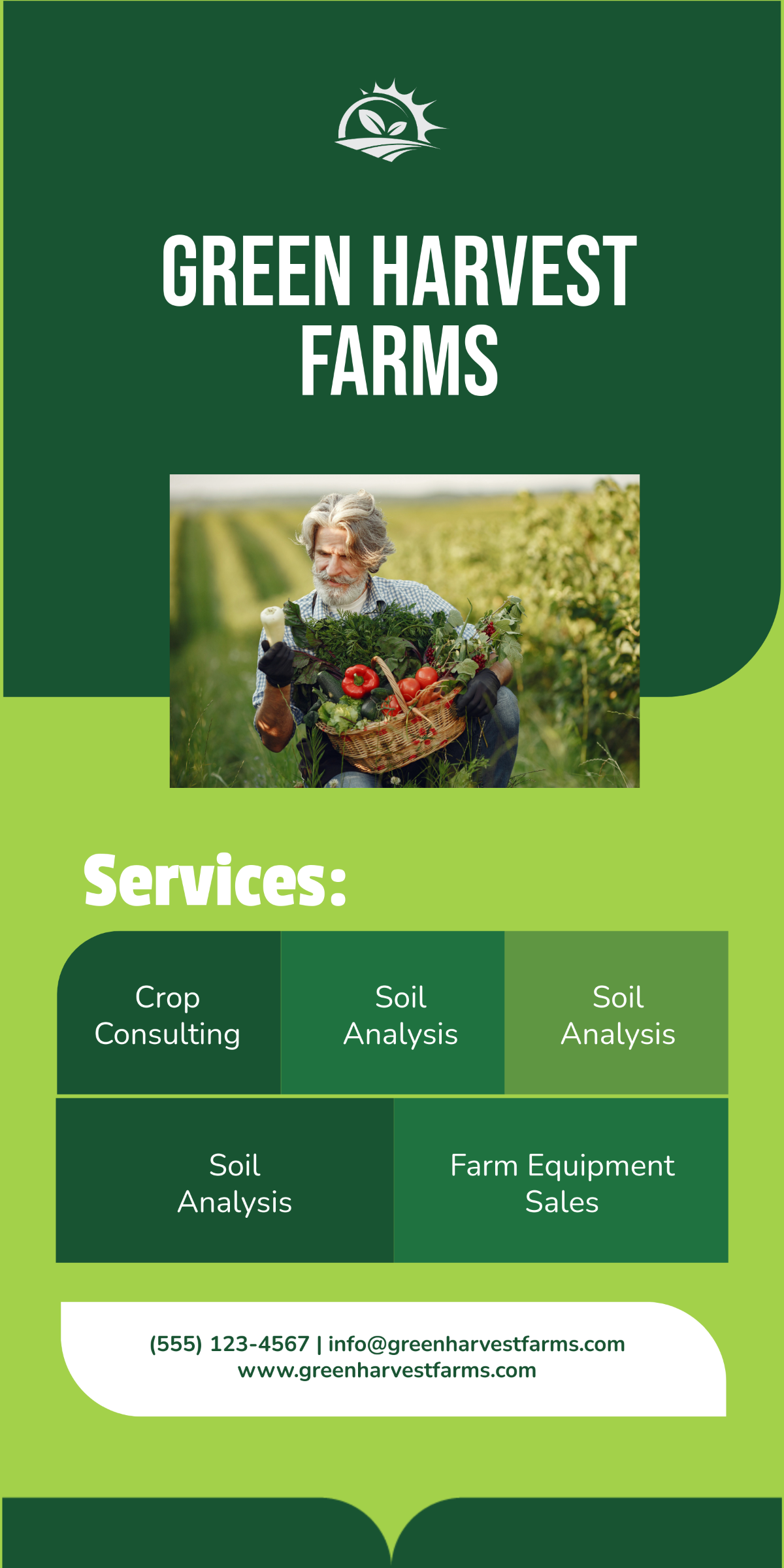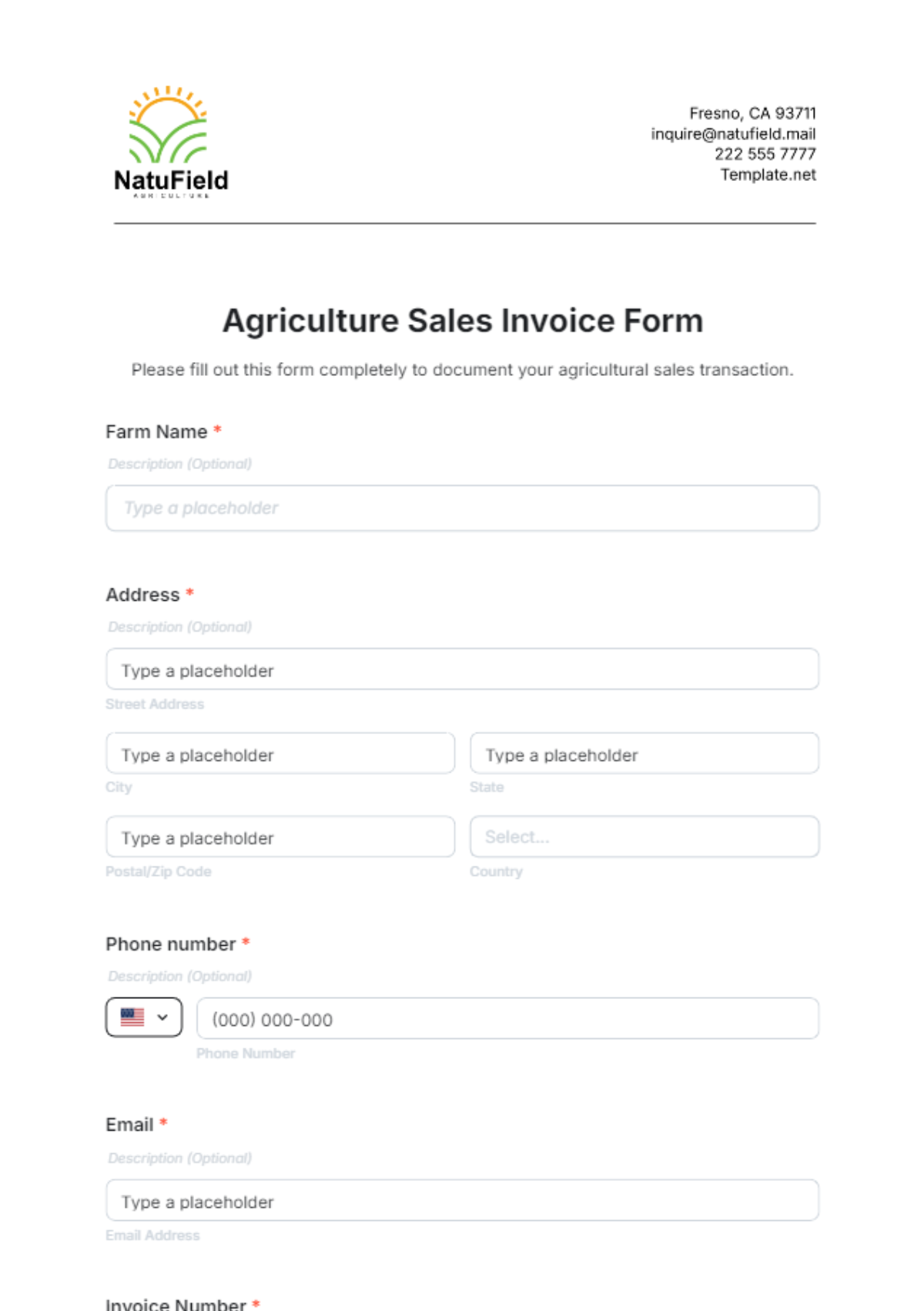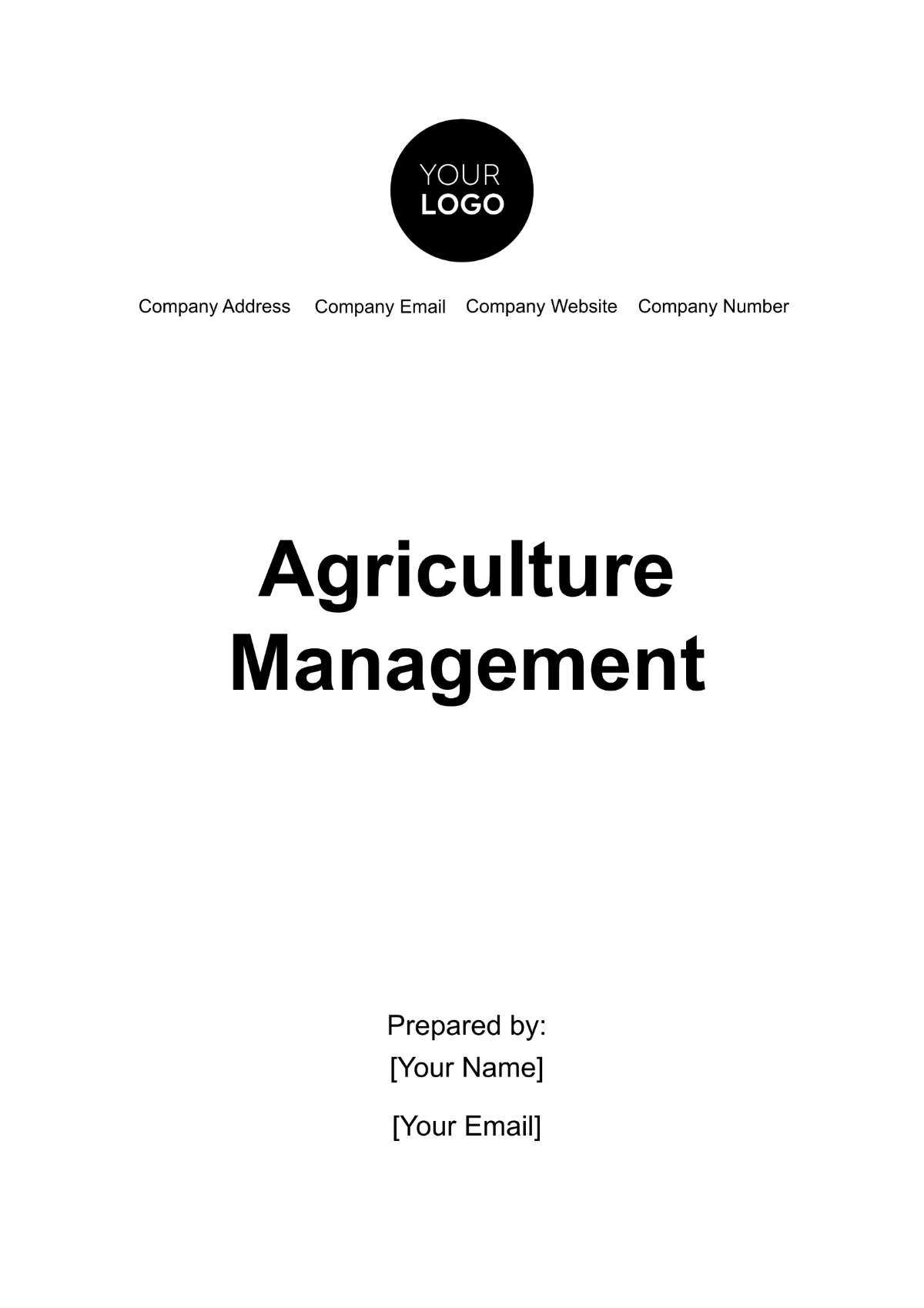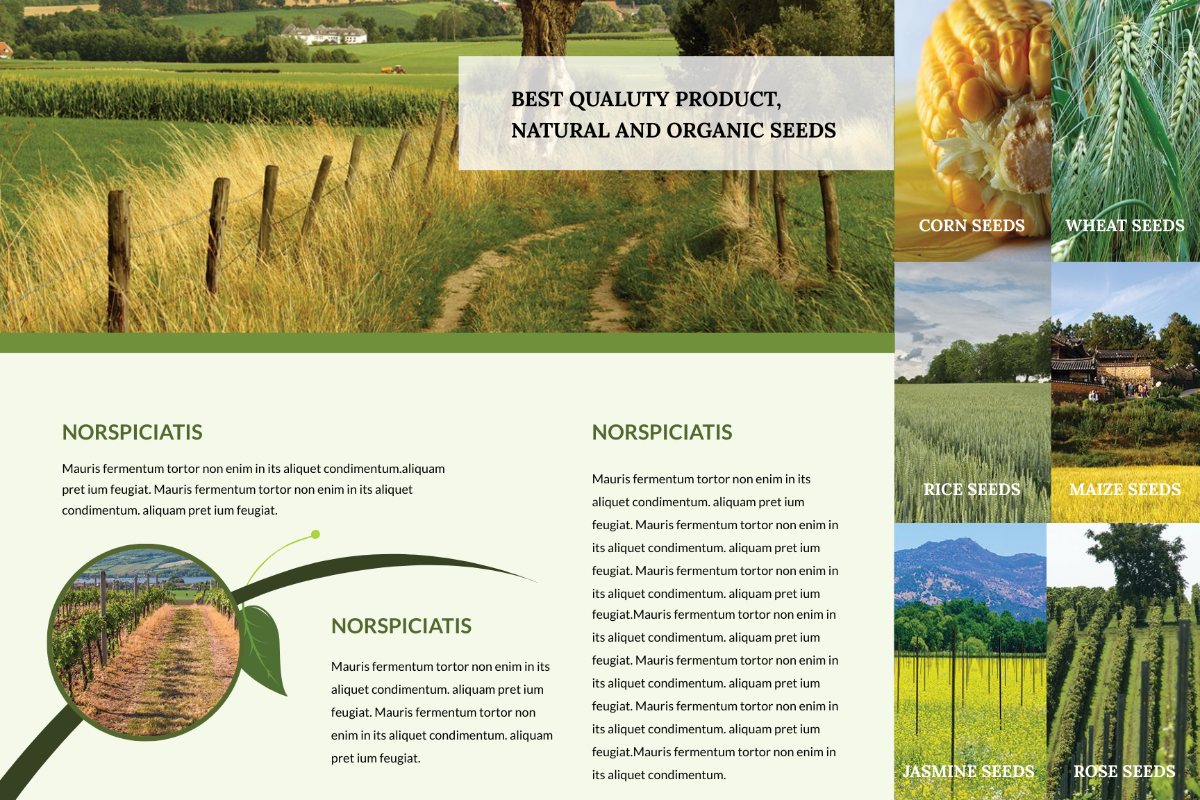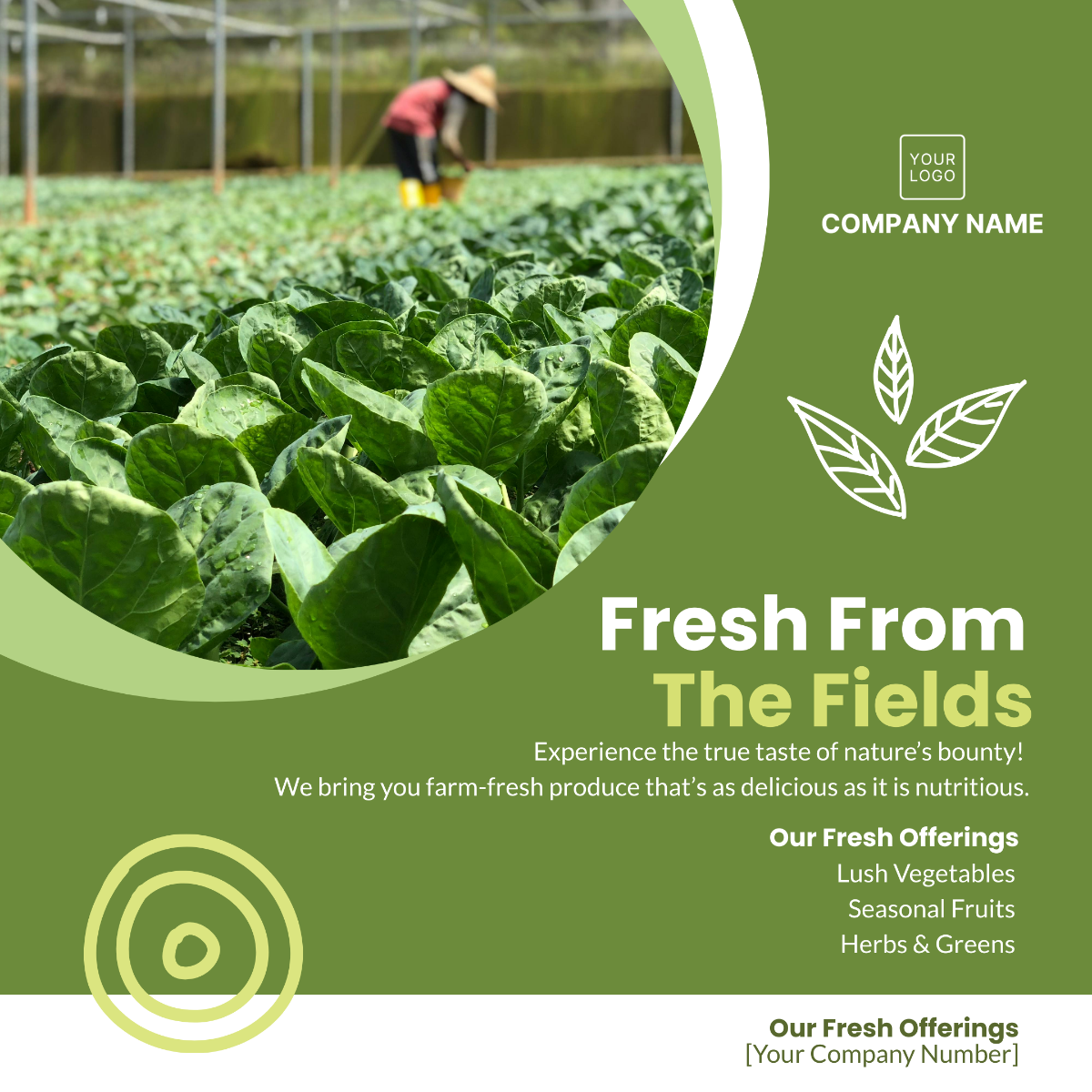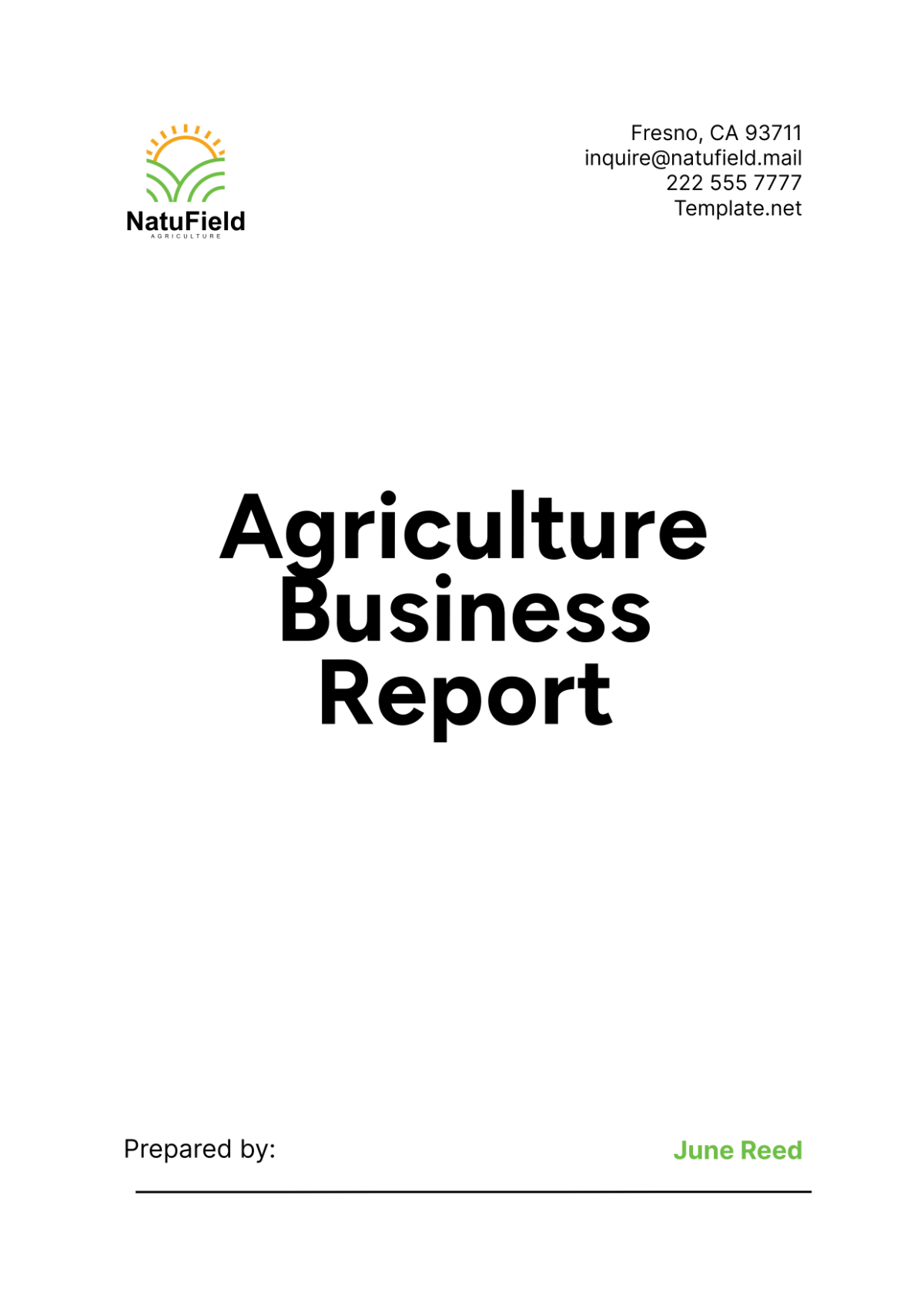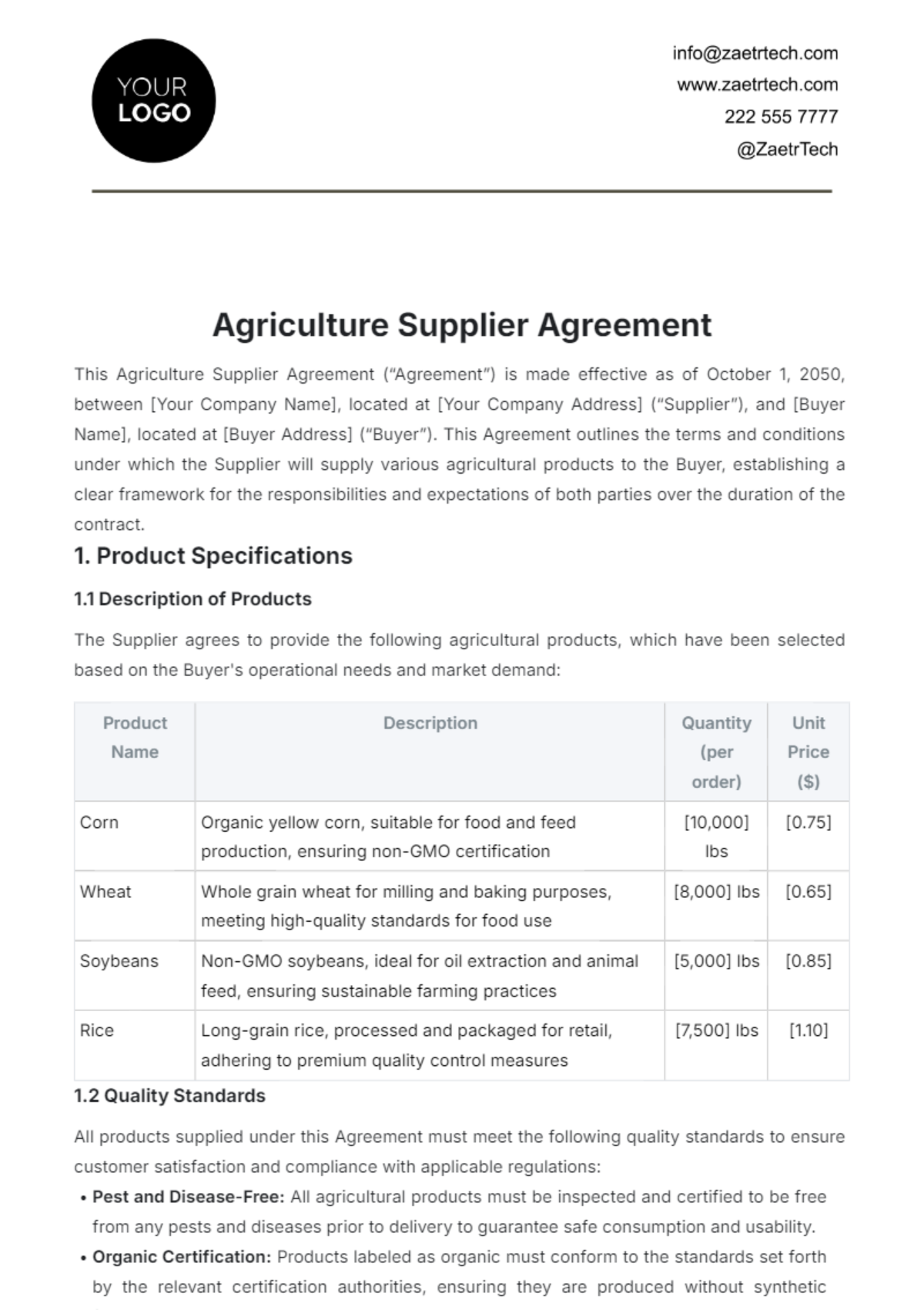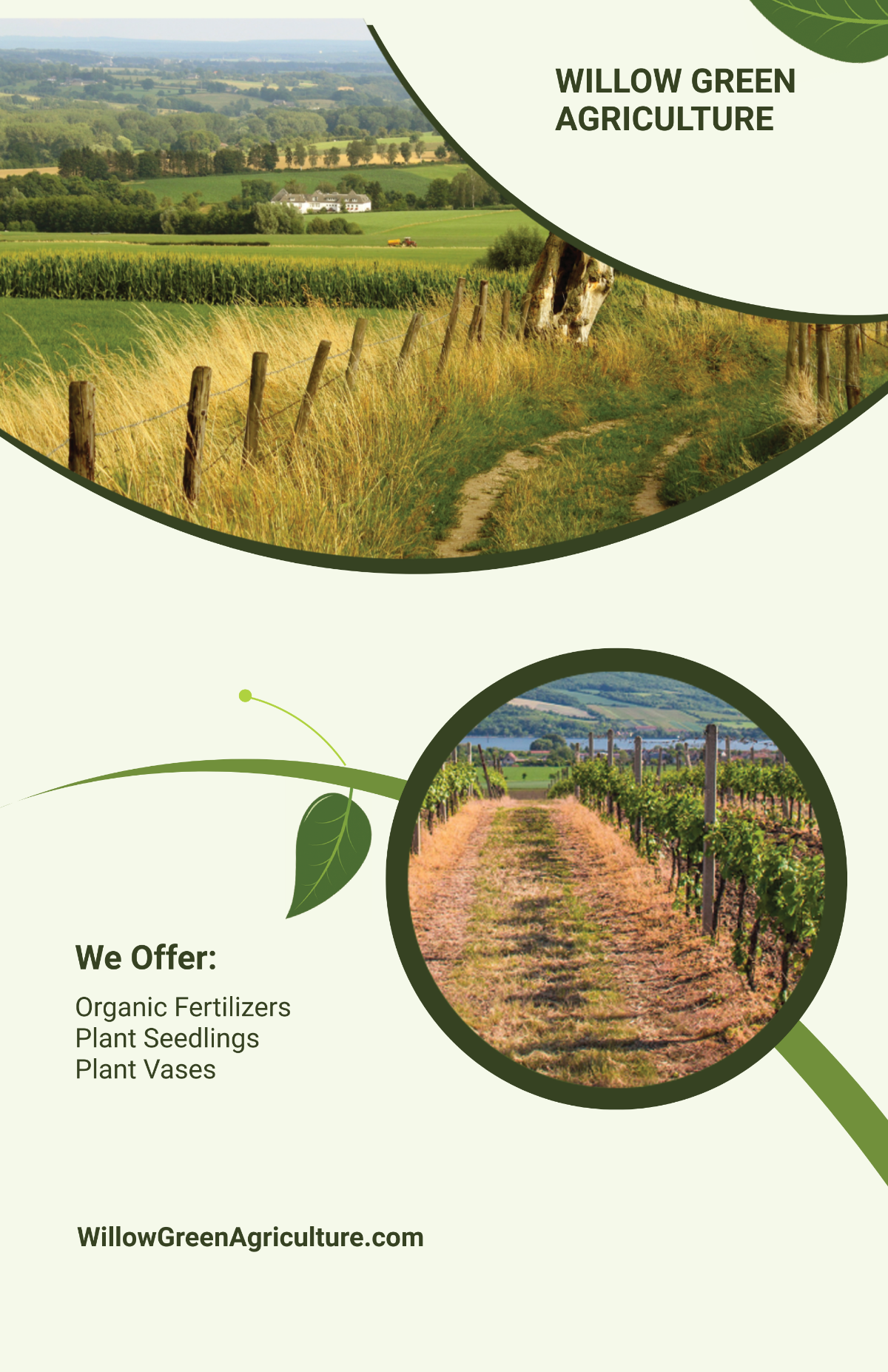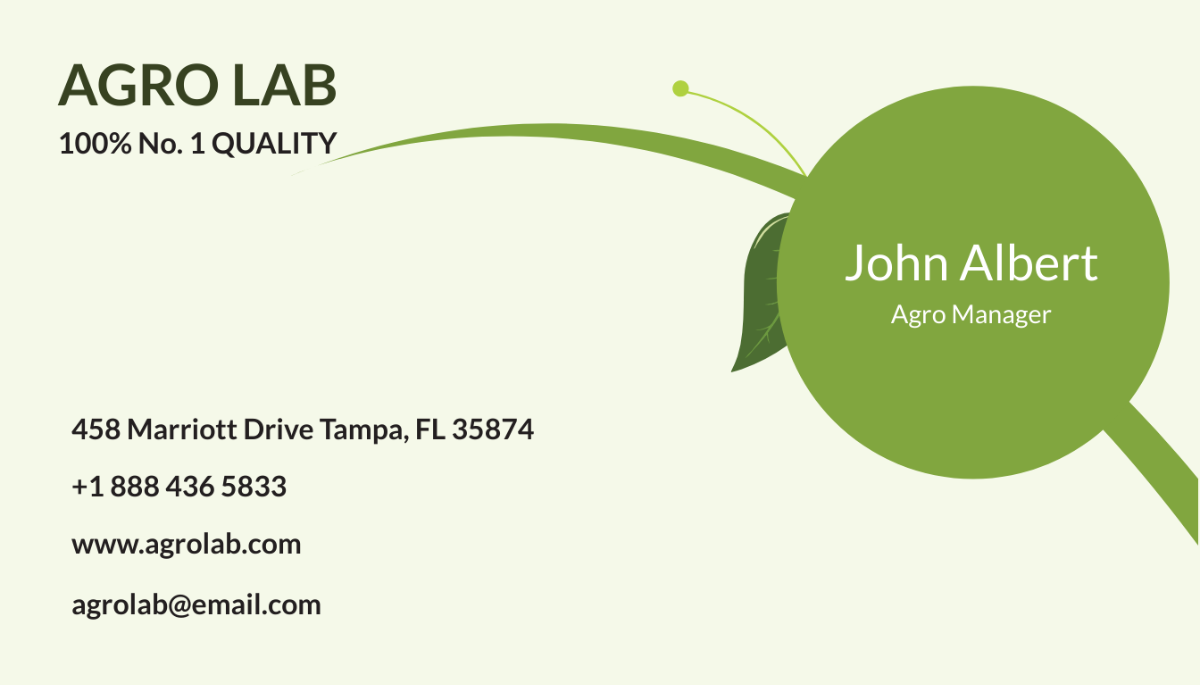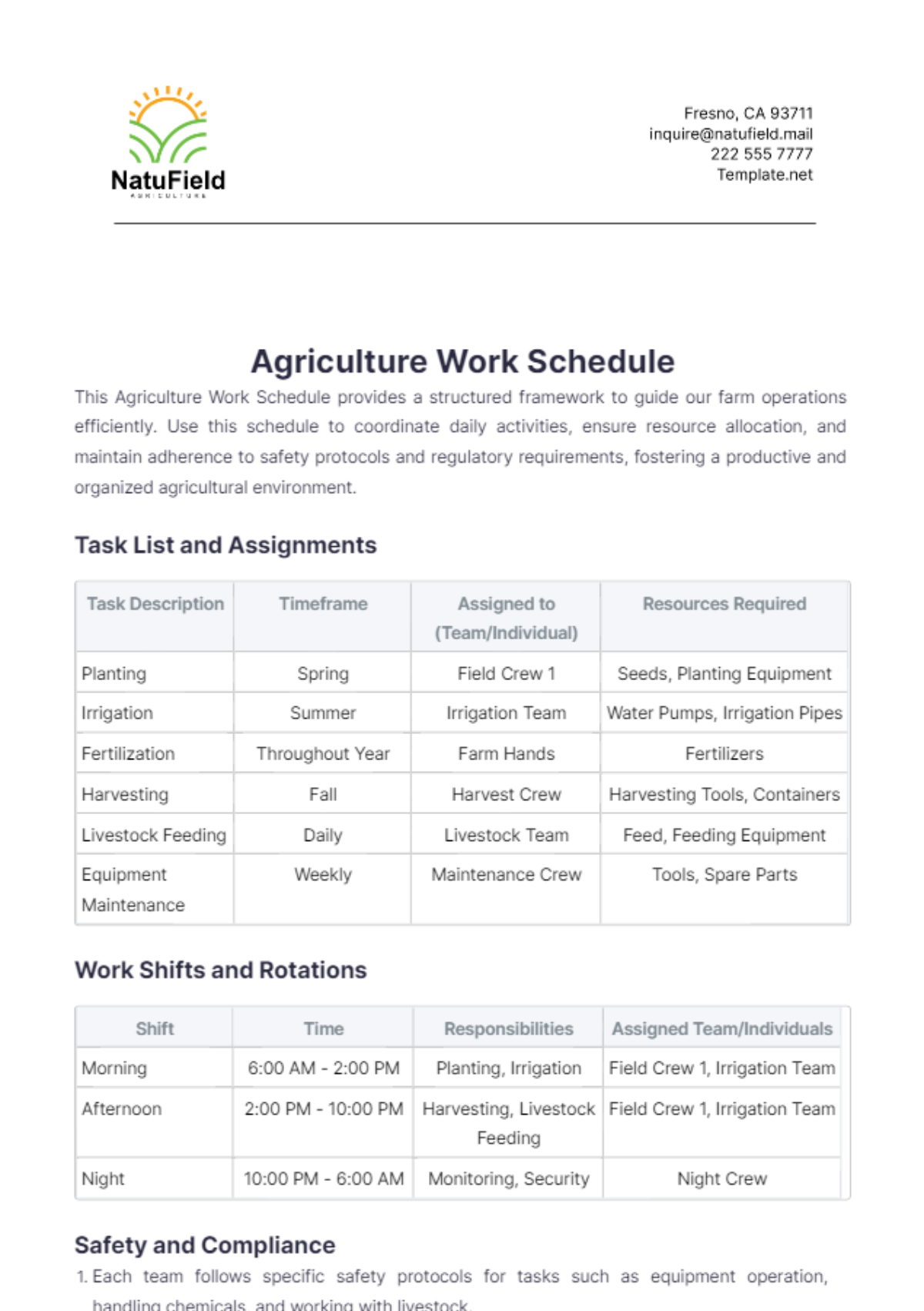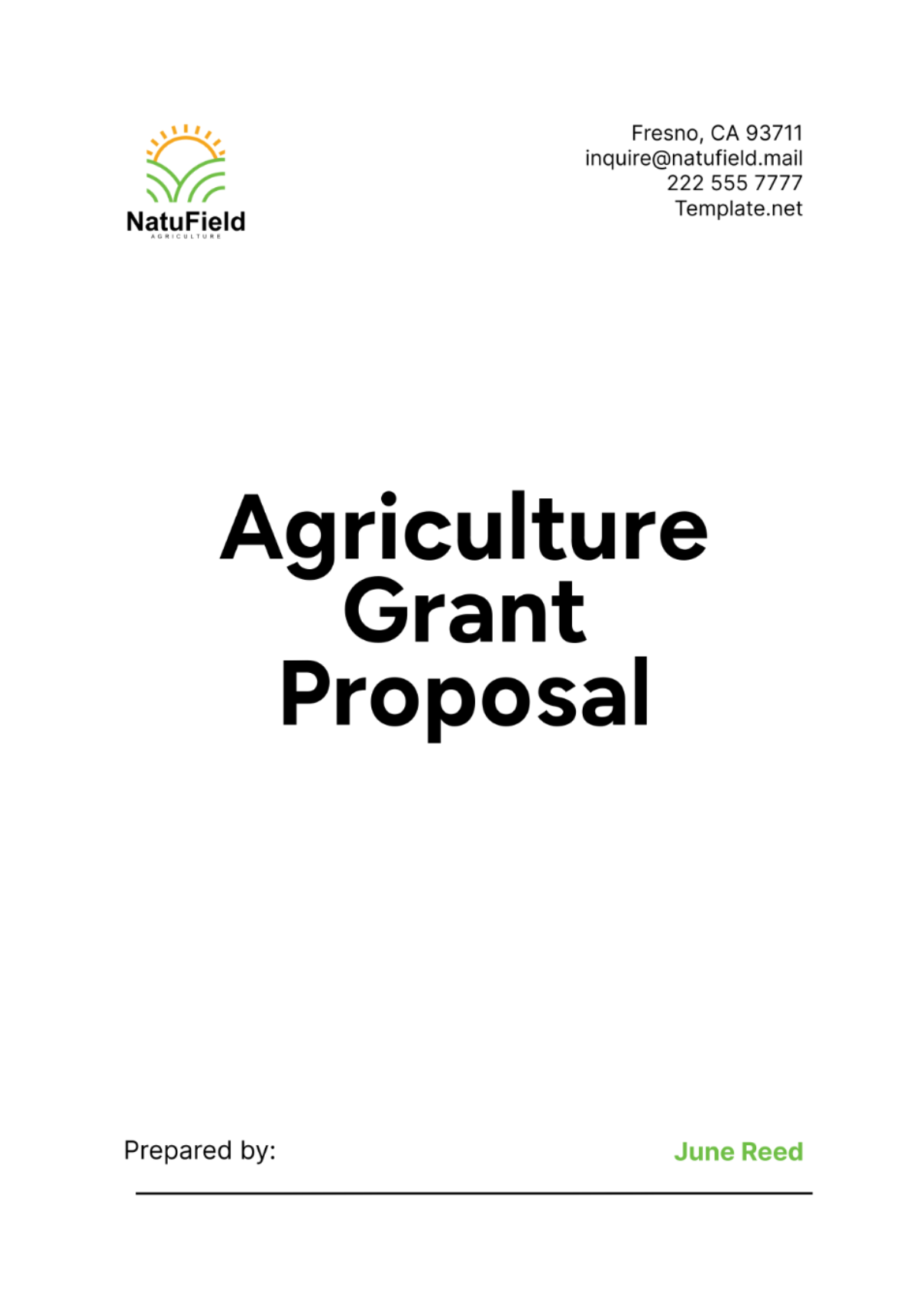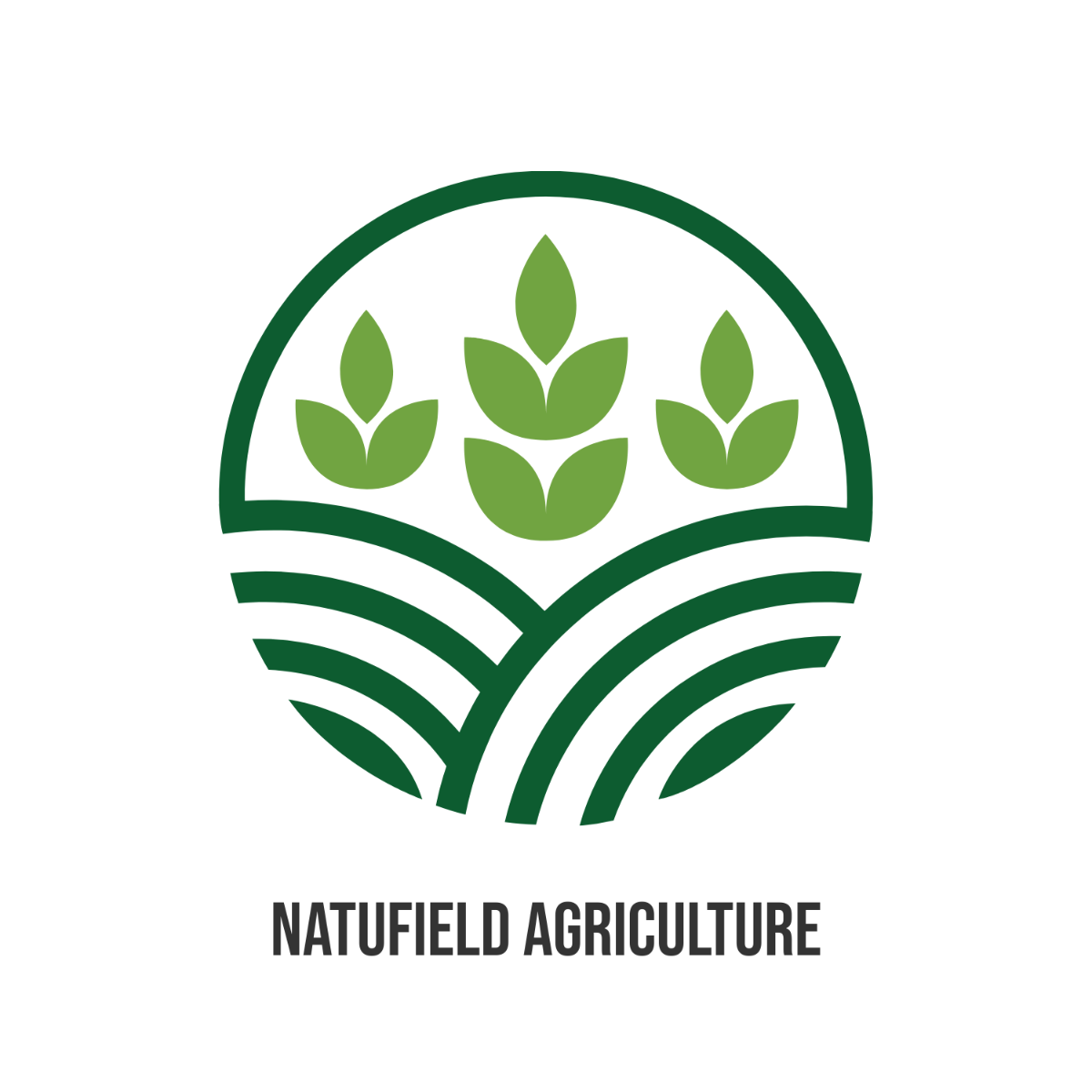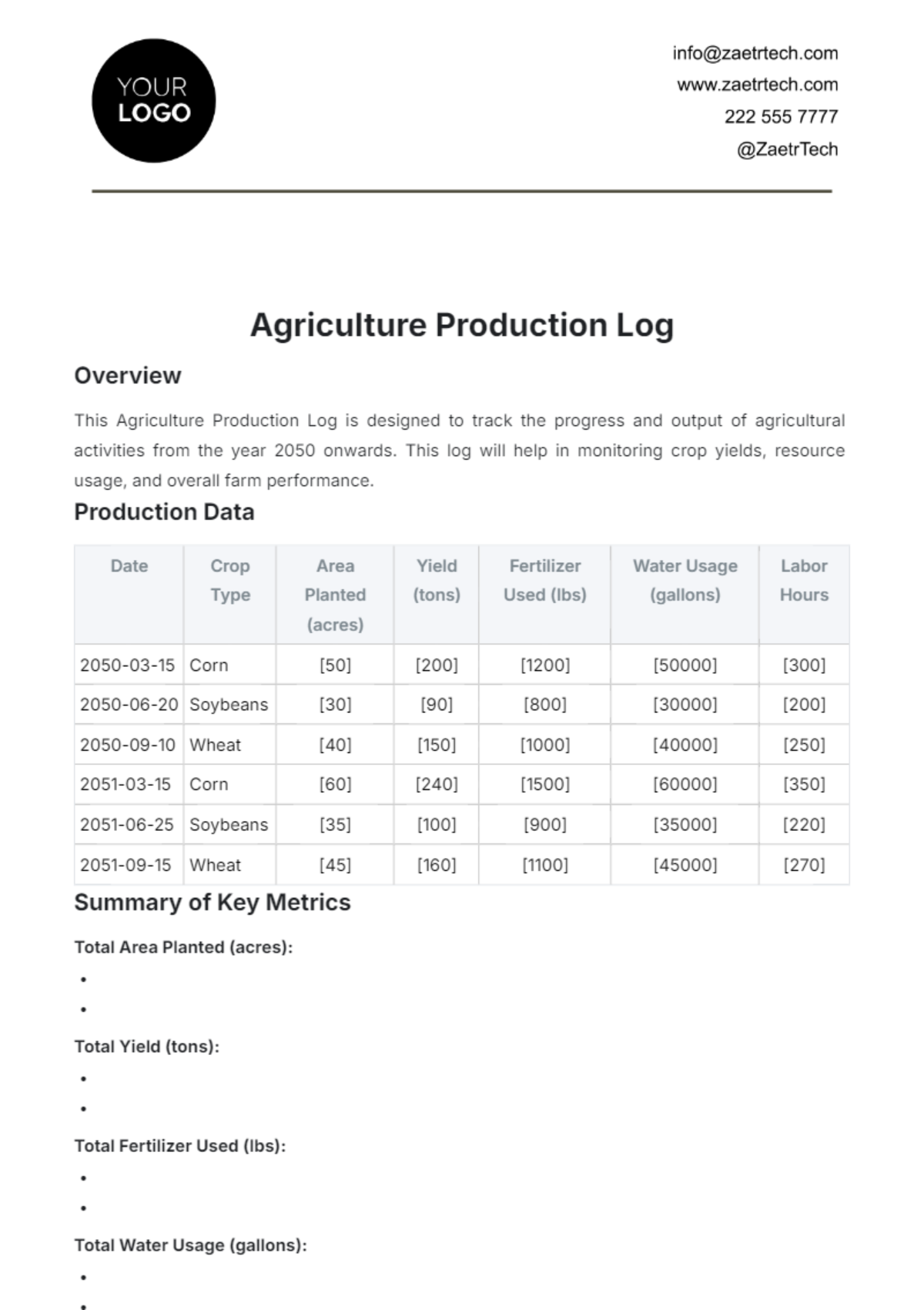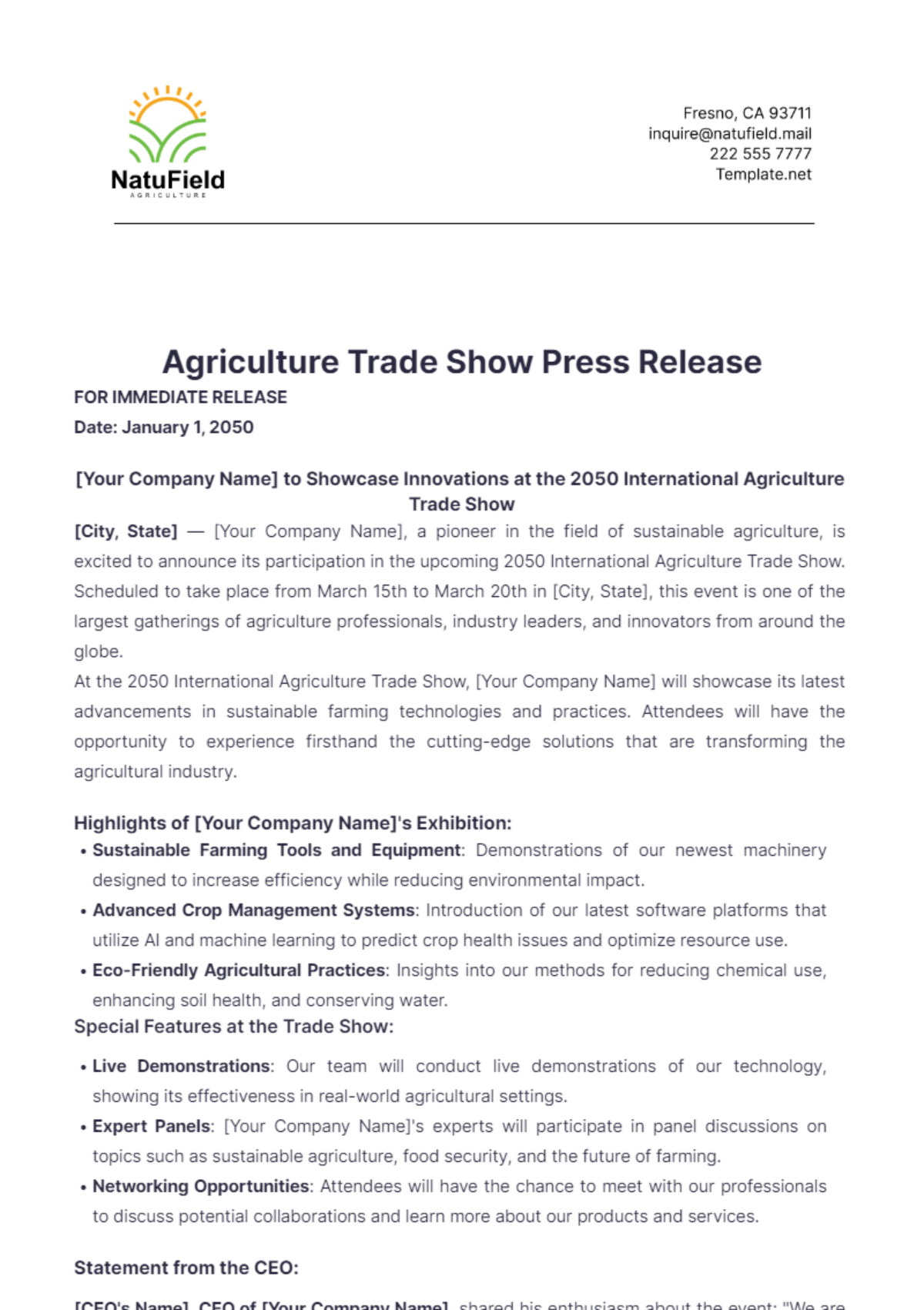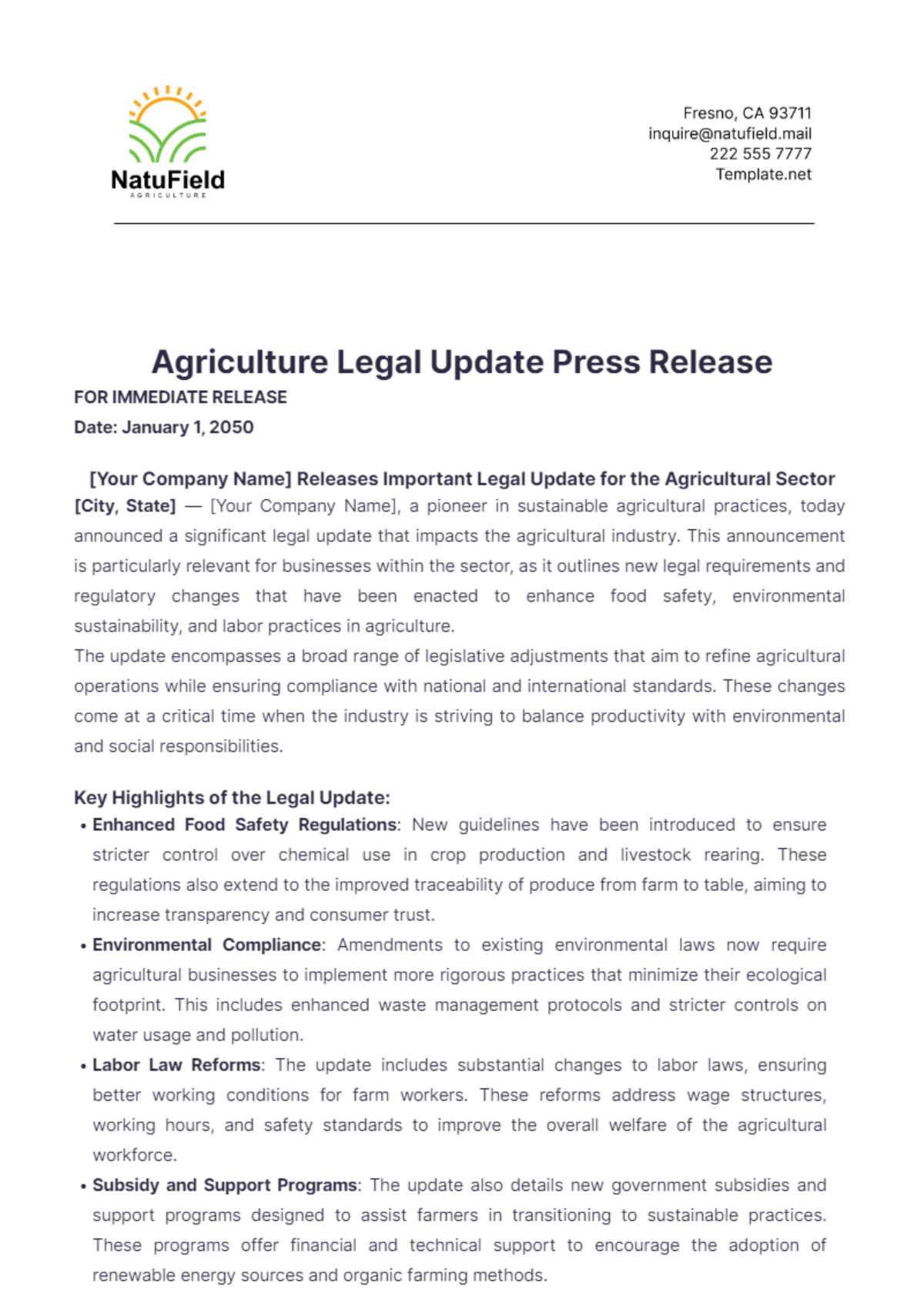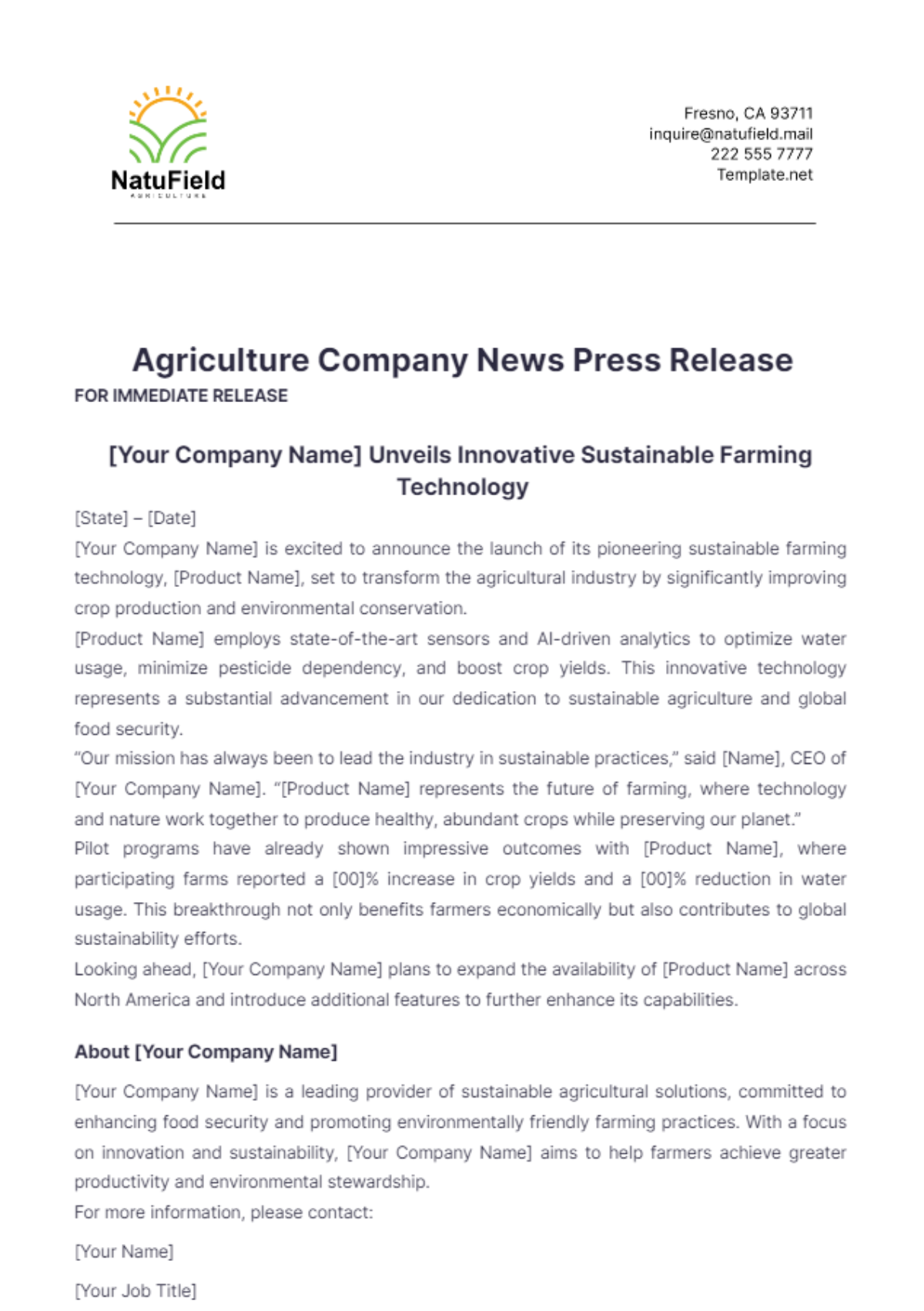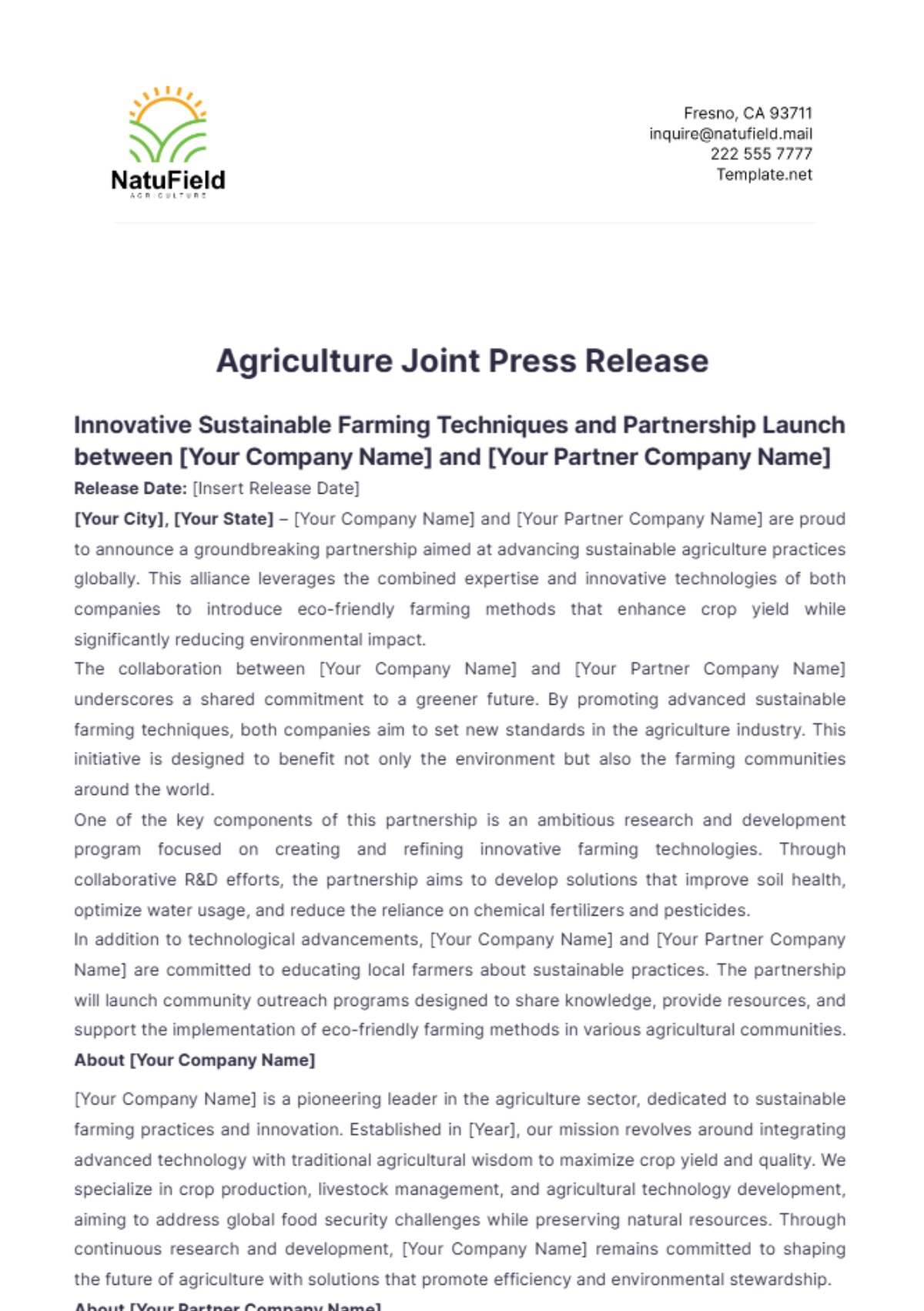Agriculture Quality Assurance Protocol
I. Overview
The Agriculture Quality Assurance Protocol is a comprehensive framework designed to ensure the highest standards of safety, quality, and sustainability in agricultural production. At [Your Company Name], we are committed to providing our customers with superior products while maintaining compliance with regulatory standards and promoting sustainable farming practices. This protocol outlines the objectives, management structure, production standards, quality control measures, and compliance requirements necessary to achieve our quality assurance goals.
II. Objectives
A. Ensure Product Safety and Quality
The primary objective of the Agriculture Quality Assurance Protocol is to guarantee the safety and quality of our agricultural products. This involves rigorous testing, monitoring, and adherence to established guidelines throughout the production process. By implementing stringent quality control measures, we aim to minimize risks and ensure that our products meet the highest standards of safety and quality.
B. Enhance Customer Satisfaction
Customer satisfaction is at the heart of [Your Company Name]'s mission. By consistently delivering high-quality products that meet or exceed customer expectations, we build trust and loyalty. Our quality assurance protocol ensures that every product we produce is safe, nutritious, and of superior quality, thereby enhancing overall customer satisfaction.
C. Comply with Regulatory Standards
Compliance with local, national, and international regulatory standards is essential for maintaining the credibility and legality of our operations. The Agriculture Quality Assurance Protocol ensures that all aspects of our production processes adhere to relevant regulations, including those related to food safety, environmental protection, and labor practices. This compliance not only protects our company but also safeguards our customers and the broader community.
D. Promote Sustainable Agricultural Practices
Sustainability is a core value at [Your Company Name]. Our quality assurance protocol incorporates practices that promote environmental stewardship, resource conservation, and social responsibility. By adopting sustainable agricultural practices, we aim to reduce our environmental footprint, support local communities, and ensure the long-term viability of our farming operations.
III. Quality Assurance Management
A. Roles and Responsibilities
Effective quality assurance management requires clearly defined roles and responsibilities. At [Your Company Name], we have established a robust management structure to oversee the implementation and maintenance of our quality assurance protocol.
Quality Assurance Manager
The Quality Assurance Manager is responsible for overseeing all quality assurance activities, including the development and implementation of the protocol, training of personnel, and monitoring of compliance. This role involves coordinating with other departments to ensure that quality standards are integrated into every aspect of our operations.
Field Inspectors
Field Inspectors play a crucial role in monitoring and evaluating the quality of our agricultural products throughout the production process. They conduct regular inspections of fields, facilities, and equipment to ensure compliance with quality standards and identify areas for improvement.
Farm Workers
Farm Workers are responsible for implementing the quality assurance protocols on the ground. This includes following best practices for planting, cultivation, harvesting, and post-harvest handling. Proper training and supervision ensure that farm workers understand and adhere to quality standards.
Management Team
The Management Team provides strategic direction and oversight for the quality assurance program. This team is responsible for setting quality goals, allocating resources, and ensuring that the quality assurance protocol aligns with the company's overall objectives and values.
B. Training and Development
Continuous training and development are essential for maintaining high standards of quality and safety. [Your Company Name] is committed to providing comprehensive training programs for all employees involved in the production process.
Initial Training Programs
All new employees undergo initial training programs that cover the fundamentals of our quality assurance protocol. This training includes an introduction to our quality standards, procedures for monitoring and reporting, and the importance of compliance with regulatory requirements.
Ongoing Training Sessions
To ensure continuous improvement, we conduct ongoing training sessions for all employees. These sessions cover updates to quality standards, new best practices, and any changes in regulatory requirements. Ongoing training helps employees stay informed and capable of maintaining high standards of quality and safety.
Certification Requirements
Certain roles within our organization require specific certifications to ensure competence in quality assurance activities. We provide support and resources for employees to obtain and maintain these certifications, ensuring that our team is equipped with the necessary knowledge and skills to uphold our quality standards.
C. Documentation and Record Keeping
Accurate and thorough documentation is a cornerstone of effective quality assurance. At [Your Company Name], we maintain detailed records of all quality assurance activities to ensure transparency, accountability, and continuous improvement.
Inspection Reports
Field Inspectors are required to complete inspection reports for each visit to our fields and facilities. These reports document the findings of the inspections, including any areas of non-compliance and recommended corrective actions. Inspection reports are reviewed by the Quality Assurance Manager and used to inform improvements in our processes.
Compliance Records
Compliance records track our adherence to regulatory standards and internal quality protocols. These records include documentation of inspections, audits, and any corrective actions taken. Maintaining comprehensive compliance records helps us demonstrate our commitment to quality and regulatory compliance.
Training Logs
Training logs document the training and development activities undertaken by our employees. These logs include information on the content of training sessions, the participants, and any certifications obtained. Training logs are essential for ensuring that all employees have received the necessary training to perform their roles effectively.
IV. Production Standards
A. Seed Quality
The quality of our agricultural products begins with the seeds we use. Ensuring seed quality is a critical component of our quality assurance protocol.
Selection Criteria
We select seeds based on strict criteria, including genetic purity, disease resistance, and suitability for our growing conditions. By choosing high-quality seeds, we lay the foundation for healthy, productive crops.
Germination Testing
Before planting, we conduct germination tests to assess the viability of our seeds. This involves planting a sample of seeds under controlled conditions and monitoring the rate of germination. Only seeds with a high germination rate are used in our fields.
Seed Treatment
To protect our crops from pests and diseases, we apply treatments to our seeds before planting. This includes the use of safe and approved pesticides and fungicides, as well as biological treatments that enhance seed health. Seed treatment is a crucial step in preventing crop loss and ensuring high yields.
B. Soil Management
Proper soil management is essential for maintaining the health and productivity of our fields. Our quality assurance protocol includes comprehensive soil management practices to ensure optimal growing conditions.
Soil Testing
Regular soil testing is conducted to monitor soil health and nutrient levels. Soil samples are analyzed for pH, organic matter content, and the presence of essential nutrients. Based on the results, we develop customized fertilization plans to address any deficiencies and maintain soil fertility.
Fertilization Protocols
Our fertilization protocols are designed to provide the necessary nutrients for healthy crop growth while minimizing environmental impact. We use a combination of organic and inorganic fertilizers, applied at the right time and in the right amounts to optimize nutrient uptake and reduce waste.
Erosion Control
Preventing soil erosion is critical for maintaining soil health and productivity. We implement erosion control measures such as contour farming, cover cropping, and the use of mulch to protect the soil from wind and water erosion. These practices help preserve soil structure and fertility, ensuring sustainable agricultural production.
C. Crop Cultivation
Our crop cultivation practices are designed to maximize yield and quality while minimizing the impact on the environment. The following practices are integral to our quality assurance protocol.
Planting Guidelines
We follow precise planting guidelines to ensure optimal crop density and spacing. This includes selecting the appropriate planting dates, using high-quality planting equipment, and adhering to recommended planting depths. Proper planting techniques promote healthy crop growth and reduce competition for resources.
Irrigation Management
Efficient irrigation management is essential for maintaining soil moisture levels and supporting crop growth. We use advanced irrigation systems, such as drip and sprinkler irrigation, to deliver water directly to the root zone. Irrigation schedules are based on soil moisture monitoring and crop water requirements, ensuring that our crops receive the right amount of water at the right time.
Pest and Disease Control
Protecting our crops from pests and diseases is a key aspect of our quality assurance protocol. We implement integrated pest management (IPM) strategies that combine biological, cultural, and chemical controls to manage pest populations and minimize damage. Regular monitoring and early detection allow us to take timely and effective action to protect our crops.
D. Harvesting Procedures
The way we harvest our crops has a significant impact on product quality and safety. Our harvesting procedures are designed to ensure that our products reach the market in the best possible condition.
Timing and Methods
Harvesting is carried out at the optimal time to ensure peak ripeness and quality. We use appropriate harvesting methods and equipment to minimize damage to the crops. The timing and methods are carefully coordinated to maintain the freshness and nutritional value of our products.
Equipment Sanitization
To prevent contamination, all harvesting equipment is thoroughly cleaned and sanitized before use. This includes tractors, harvesters, and any containers used for transporting the crops. Sanitization protocols are strictly followed to ensure that our products are safe for consumption.
Post-Harvest Handling
After harvesting, crops are handled with care to maintain their quality and safety. This includes proper sorting, grading, and packaging to remove any damaged or contaminated produce. Post-harvest handling also involves maintaining optimal storage conditions, such as temperature and humidity control, to preserve the freshness and quality of our products.
V. Quality Control Measures
A. Regular Inspections
Regular inspections are a cornerstone of our quality control measures. These inspections ensure that every aspect of our production process adheres to our high standards of quality and safety.
Field Inspections
Field inspections are conducted at various stages of the crop growth cycle. Inspectors assess the health of the crops, check for signs of pests and diseases, and verify that farming practices are being followed correctly. Field inspections help us identify and address any issues early, ensuring that our crops remain healthy and productive.
Laboratory Testing
Laboratory testing is used to verify the quality and safety of our products. Samples of soil, water, and crops are analyzed for contaminants, nutrient levels, and other quality indicators. Laboratory testing provides scientific data that supports our quality assurance efforts and helps us make informed decisions about our farming practices.
Product Sampling
Product sampling involves taking samples of our final products for quality testing. These samples are tested for factors such as pesticide residues, microbial contamination, and nutritional content. Product sampling ensures that our products meet the required quality and safety standards before they reach our customers.
B. Corrective Actions
When quality issues are identified, corrective actions are taken to address the problem and prevent recurrence. Our corrective action process is systematic and thorough, ensuring that issues are resolved promptly and effectively.
Identifying Non-Compliance
Non-compliance with quality standards is identified through inspections, testing, and monitoring. When an issue is detected, it is documented, and the root cause is investigated. This step is crucial for understanding the underlying problem and determining the best course of action.
Implementing Solutions
Once the root cause is identified, corrective actions are implemented to address the issue. This may involve changing farming practices, adjusting processes, or providing additional training to employees. The goal is to eliminate the problem and prevent it from occurring in the future.
Monitoring Effectiveness
After corrective actions are implemented, their effectiveness is monitored to ensure that the issue has been resolved. Follow-up inspections and testing are conducted to verify that the corrective actions have been successful. Continuous monitoring helps us maintain high standards of quality and safety.
C. Continuous Improvement
Continuous improvement is a fundamental principle of our quality assurance protocol. We are committed to constantly evaluating and enhancing our processes to achieve better results.
Feedback Mechanisms
Feedback from employees, customers, and stakeholders is an important source of information for continuous improvement. We encourage open communication and provide channels for reporting concerns and suggestions. Feedback is reviewed and used to identify opportunities for improvement.
Review Meetings
Regular review meetings are held to assess the performance of our quality assurance protocol. These meetings involve key personnel from different departments who discuss inspection findings, test results, and feedback. Review meetings help us identify trends, address issues, and plan for future improvements.
Process Optimization
Based on the insights gained from feedback and review meetings, we implement process optimization initiatives. This may involve adopting new technologies, refining our practices, or enhancing our training programs. Process optimization ensures that we are continuously improving our quality assurance efforts and achieving better outcomes.
VI. Inspection and Testing Procedures
A. Field Inspections
Field inspections are integral to our quality assurance protocol at [Your Company Name]. These inspections ensure that our crops meet the required standards at various stages of growth and are free from pests and diseases.
Frequency and Timing
Field inspections are conducted at key stages of crop development, including pre-planting, post-planting, mid-growth, and pre-harvest. These inspections are scheduled to coincide with critical periods in the crop lifecycle to ensure that any issues are identified and addressed promptly.
Inspection Process
The inspection process involves a thorough examination of the fields, including soil conditions, plant health, pest presence, and compliance with farming practices. Inspectors use standardized checklists to ensure consistency and completeness in their evaluations.
B. Laboratory Testing
Laboratory testing provides scientific validation of the quality and safety of our products. This involves analyzing samples of soil, water, and crops for contaminants, nutrient levels, and other quality indicators.
Types of Tests
We conduct a variety of tests, including:
Soil nutrient analysis
Water quality testing
Pesticide residue analysis
Microbial contamination testing
Nutritional content analysis
Sample Collection and Handling
Proper sample collection and handling are crucial to obtaining accurate test results. Samples are collected using sterile techniques and transported to the laboratory under controlled conditions to prevent contamination.
C. Product Sampling
Product sampling is essential for ensuring that our final products meet quality and safety standards. Samples of the harvested crops are tested for key quality indicators before they are released to the market.
Sampling Methodology
We use random sampling techniques to obtain representative samples of our products. This involves selecting samples from different batches and locations to ensure a comprehensive assessment.
Quality Indicators
Key quality indicators tested during product sampling include:
Pesticide residues
Microbial contamination
Nutritional content
Moisture levels
VII. Corrective Actions and Continuous Improvement
A. Identifying Non-Compliance
Non-compliance with quality standards is identified through regular inspections, testing, and monitoring. When an issue is detected, it is thoroughly documented, and the root cause is investigated to understand the underlying problem.
B. Implementing Solutions
Once the root cause of a quality issue is identified, corrective actions are implemented to resolve the problem and prevent recurrence.
Corrective Action Plan
A corrective action plan is developed, outlining the steps needed to address the issue. This plan includes:
Specific actions to be taken
Responsible personnel
Timeline for implementation
Monitoring and evaluation criteria
C. Monitoring Effectiveness
The effectiveness of corrective actions is monitored through follow-up inspections and testing. This ensures that the implemented solutions are successful in resolving the issue and maintaining quality standards.
Follow-Up Inspections
Follow-up inspections are conducted to verify that corrective actions have been properly implemented and are effective in addressing the quality issue.
Ongoing Monitoring
Continuous monitoring helps identify any recurring issues and ensures that quality standards are consistently maintained. This involves regular reviews of inspection and testing data to detect trends and areas for improvement.
D. Continuous Improvement
Continuous improvement is a fundamental principle of our quality assurance protocol. We are committed to evaluating and enhancing our processes to achieve better results.
Feedback Mechanisms
Feedback from employees, customers, and stakeholders is an important source of information for continuous improvement. We encourage open communication and provide channels for reporting concerns and suggestions.
Review Meetings
Regular review meetings are held to assess the performance of our quality assurance protocol. These meetings involve key personnel from different departments who discuss inspection findings, test results, and feedback.
VIII. Compliance and Record Keeping
A. Regulatory Compliance
Compliance with local, national, and international regulatory standards is essential for maintaining the credibility and legality of our operations. Our quality assurance protocol ensures that all aspects of our production processes adhere to relevant regulations.
Key Regulations
We comply with a range of regulations, including:
Food safety standards
Environmental protection laws
Labor practices and worker safety regulations
B. Documentation
Accurate and thorough documentation is a cornerstone of effective quality assurance. At [Your Company Name], we maintain detailed records of all quality assurance activities to ensure transparency and accountability.
Inspection Reports
Field inspectors complete inspection reports for each visit, documenting findings and recommended corrective actions. These reports are reviewed by the Quality Assurance Manager and used to inform process improvements.
Compliance Records
Compliance records track our adherence to regulatory standards and internal quality protocols. These records include documentation of inspections, audits, and corrective actions taken.
C. Training Logs
Training logs document the training and development activities undertaken by our employees. These logs include information on the content of training sessions, participants, and certifications obtained.
IX. Sustainable Agricultural Practices
Practice | Description |
|---|---|
Environmental Stewardship | Sustainability practices promoting environmental stewardship, resource conservation, and social responsibility. Includes soil conservation (cover cropping, crop rotation, reduced tillage) and water management (drip irrigation, rainwater harvesting). |
Resource Conservation | Minimization of waste and efficient resource usage. Includes waste management (reduce, reuse, recycle agricultural waste) and energy efficiency (use of renewable energy, equipment optimization). |
Social Responsibility | Commitment to fair labor practices, safe working conditions, and community engagement. Includes fair labor practices (fair wages, safe conditions) and community engagement (educational programs, local partnerships). |
X. Performance Review and Reporting
A. Performance Metrics
We use a range of performance metrics to evaluate the effectiveness of our quality assurance protocol and identify areas for improvement.
Performance Metric | Description | Frequency |
|---|---|---|
Crop Yield and Quality | Measures the quantity and quality of crops produced. | Monthly |
Compliance with Regulatory Standards | Assesses adherence to local, national, and international regulations. | Quarterly |
Customer Satisfaction | Evaluates customer feedback and satisfaction with product quality. | Biannually |
Sustainability Metrics | Includes water usage, energy consumption, and waste management practices. | Annually |
B. Regular Reporting
Regular reporting ensures transparency and accountability in our quality assurance efforts. We provide comprehensive reports on our performance to stakeholders, including management, employees, customers, and regulatory bodies.
Report Type | Description | Recipients | Frequency |
|---|---|---|---|
Internal Reports | Tracks progress, identifies trends, and informs decision-making. | Management Team | Monthly |
External Reports | Demonstrates commitment to quality and compliance, including performance metrics. | Customers, Regulatory Bodies | Quarterly |
Sustainability Report | Details sustainability initiatives, metrics, and outcomes. | Stakeholders, Community Partners | Annually |
Compliance Report | Summarizes compliance activities, inspections, and corrective actions. | Regulatory Agencies | Annually |
C. Review and Improvement Process
Our review and improvement process involves regular evaluations of our quality assurance protocol to ensure it remains effective and aligned with our goals.
Annual Reviews
Annual reviews are conducted to assess the overall performance of our quality assurance protocol. These reviews involve a comprehensive analysis of inspection data, test results, feedback, and performance metrics.
Continuous Improvement Plans
Based on the findings of the annual reviews, we develop continuous improvement plans to address any identified issues and enhance our quality assurance efforts. These plans outline specific actions, timelines, and responsibilities to ensure ongoing improvement.
